
|
In September of 2007 I again headed south for work related tasks. It had taken several months to get the insurance issues resolved to commence the rebuild of our property in Savannah damaged by fire. Because I planned to oversee the rehabilitation personally and may be in town for multiple weeks, I decided to drive down so Iíd have my vehicle available.Although Iím not fond of being away from home for weeks at a time, I viewed this as an opportunity to do some photography and perhaps seek out subjects that differed from the usual in my local area. As I was driving unlike the June trip when I traveled by air, I was able to bring along my cameras and lens set as well as any accessories I thought may aid this effort. Itís a long drive from Maine to Georgia and I took two days in transit. I traveled alone with a good set of audio books and not being in any particular hurry tried to do the bulk of it in daylight. When heading south, I always attempt to get below Richmond the first day. This puts the Northeast Corridor and the worst congestion behind me and although itís a long day initially, the drive further south from there is fairly leisurely afterwards with little chance of significant traffic issues. On this trip the first night I stopped in Virginia close to the North Carolina border. I was in Savannah the next afternoon and went directly to the project.
I had time to do further research about where to seek out birds while in the Low Country and searched the web for information and localities. Much of what I reviewed for places to go was familiar from my last visit but I wished to follow up just in case I had more time with the upcoming weekends. While doing this I came across a website for Wilderness Southeast and emailed this firm to learn more about what they offered. In the end result, I planned a morning session with one of their guides. A representative from Wilderness Southeast called my cell phone in transit and we discussed time availability once I got settled in. I set up a meeting for the morning after I arrived in Savannah as this worked best for my upcoming schedule from the timeframe they had available. So, I met my guide for this outing, Diana Churchill, at 0700 hours next to the Skidaway Island State Park. It was still dark as I made the drive from the airport area, where I stayed for the first few nights, to Skidaway that morning. Sunrise was just after seven, perhaps an hour later than what we experienced at home. Morning is always best for birding but photographically speaking itís preferable in my view to start the first hour after sunrise to allow enough light to get the shutter speed up a bit. This varies of course with where youíre shooting - on a beach, in the woods, etc. Even with an extended flash it can be difficult and frustrating to image birds in early morning because any movement will blur the image.
Thursday September 6th
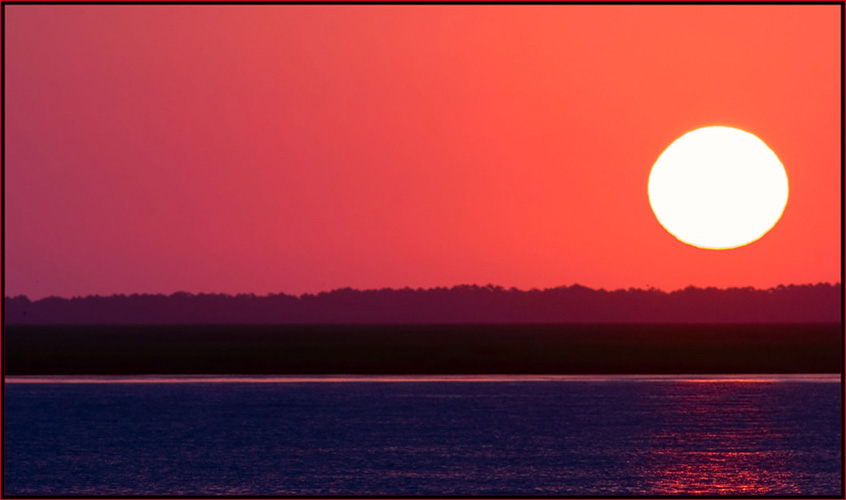
|
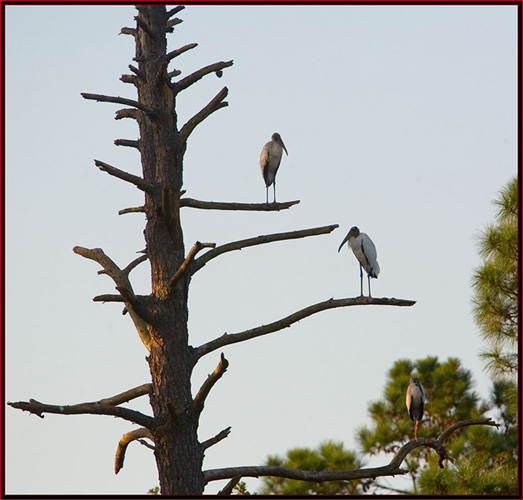
|
Once ready we walked down a path bordered on both sides with trees and other vegetation with the water on both sides of us. The visibility through the trees to the water wasnít great and this path offered only a few clear views on either side to check out the wildlife. I was hoping to spot a rail doing some morning foraging but our search yielded nothing. There could have been a group just a few feet away that we would never have viewed but we didnít hear any close by. Diana showed me where the Wood Storks live, at least during this time of year. Iíd seen examples of these on Skidaway Island before but there were quite a few more in this one place than what Iíd seen previously. Not too close and skittish for certain but I was able to obtain some shots of them in the trees. As Diana was in the lead, she got to clear away all the spider webs constructed across the trail during the nightÖ Thanks Diana! Some of the Wood Storks in the trees... |
|
As we walked along birds that were in the trees next to the path bolted across the water as we flushed them. It was dense enough that it was difficult to see them perched
until they moved. I didnít feel like we missed many photographic opportunities with this because although close with a terrific image scale, there was no way to get an
unobstructed shot. There were some adult Yellow-crowned Night Herons on stands in the middle of the water and I was really pleased to see these. These are rare in Maine;
IĎd taken some images of them before in Georgia but this was the first opportunity to get a shot of an adult in their typical pose. Most of my previous shots had been of
immature birds and they really donít appear much alike.
Adult Yellow-crowned Night Heron
|
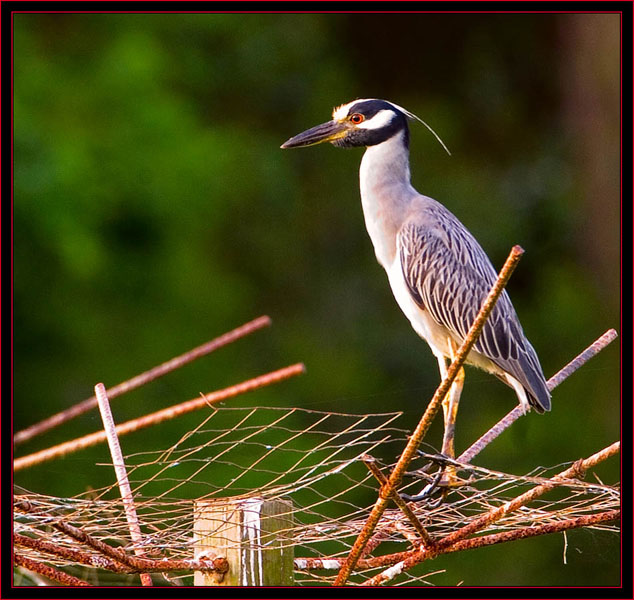
|
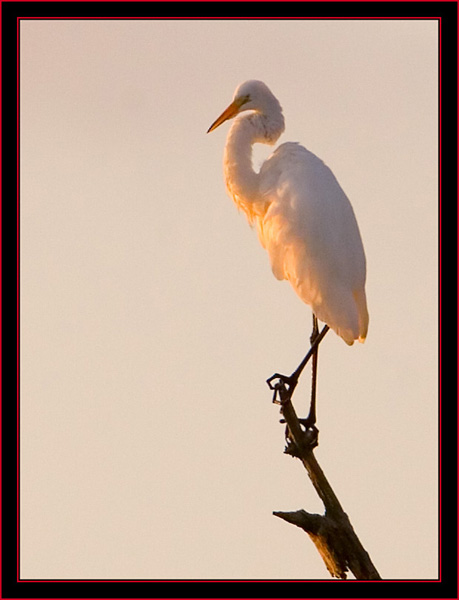
|
We viewed many examples of Black-crowned Night Herons, seen in Maine regularly in summer. Other than these herons we viewed the usual Great & Snowy Egrets, examples of the Anhinga, Great Blue Herons and many of the common perching birds. I also viewed one of the largest spiders Iíd ever seen in an immense web alongside the path. I made a note of this thinking if I got back over this way Iíd make a point to get a macro shot of this beast. A Perched Great Egret in morning light... |

|
|
Diana asked what Iíd like to do next. One of the thoughts I had was that Skidaway Island State Park is known to have excellent examples of Painted Buntings that nest in the park.
We discussed this and although it wasnít the premier time to seek out these birds, we decided to head over the park, not far from where we were, to take a look around. We parked her
vehicle in a church lot and traveled together to reduce parking cost and so we could talk.
Red-bellied Woodpecker
|
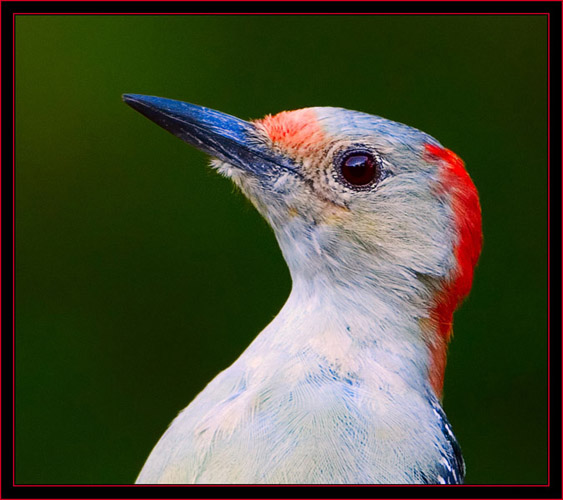
|
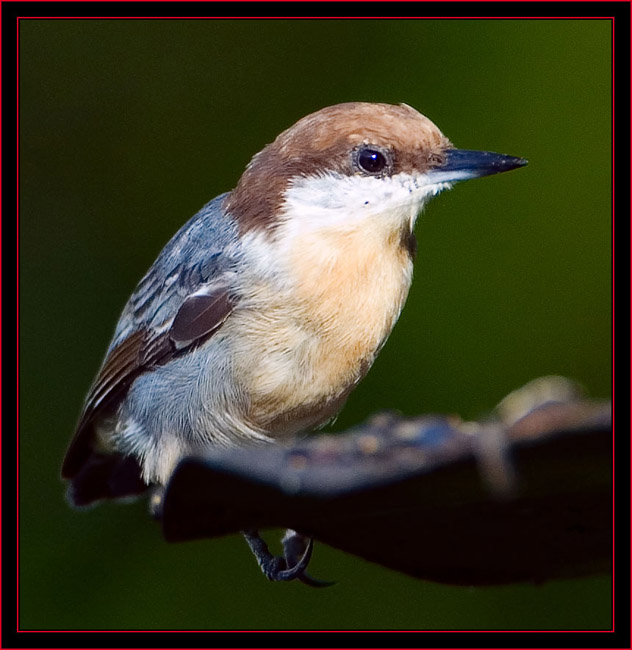
|
Skidaway Island State Park is a nice refuge which allows camping and includes several excellent types of bird environments. Actually this entire area is like a large version of Scarborough Marsh in
Maine for those of us that frequent that area. Diana is smart about where to seek birds - we parked the vehicle packed up the gear and walked behind one of the park buildings to a series of bird
feeders they had set up. Iíve found feeders will present a good indication of the birds in the area and this was the case at this facility. I wasnít employing a flash and it wasnít as bright as
Iíd have preferred so the shutter speed wasnít stopping action well, but this was a fun time and a wonderful photographic outing.
Brown-headed Nuthatch |
|
It wasnít long before examples of Painting Buntings arrived and Diana pointed them out. Initially this group consisted of females and/or young males;
no adult males were to be seen. Eventually this changed and I was pleased to get some images of the beautiful males as they arrived.
A Painted Bunting - probably a young male...
|
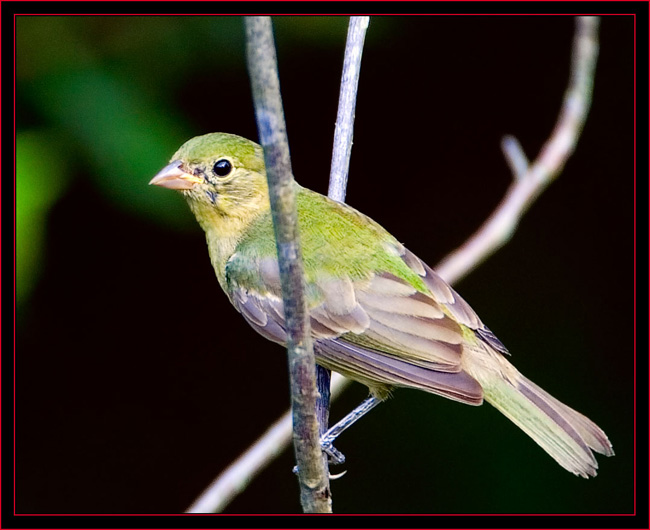
|
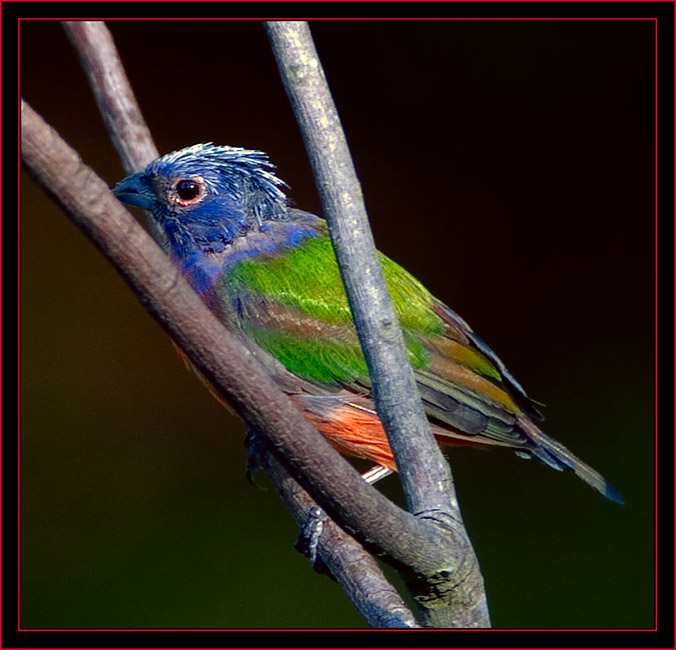
|

|
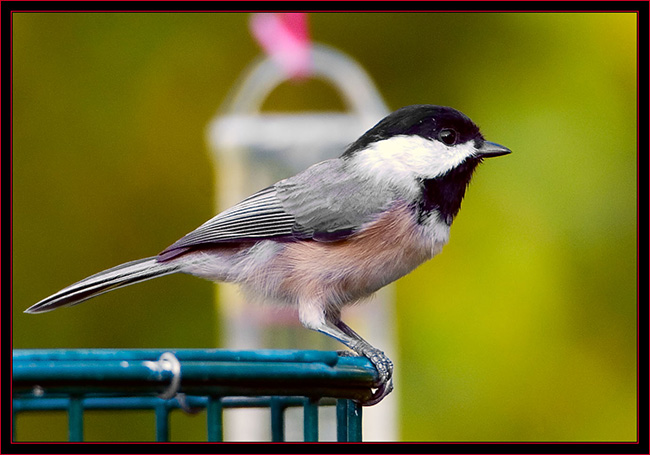
|
There was good cover for the birds in the area and several sparsely leaved bushes turned out to be a favorite perch for many before they made the flight into the feeders.
These perches proved ideal to get some nicely lighted shots of the locals as the sun climbed higher... There was also a bird bath nearby and I learned to keep an eye on
this also as it was frequented often. We stayed in this spot for some time and I got many interesting shots before we decided to move into The Landings area of Skidaway Island.
I think Diana was a bit surprised when I indicated Iíd been in The Landings, a gated community, many times as my friend and associate Bill Grotto lives there and Iíve stayed
with him often. Before we packed up and left the park we walked a short distance on one of the trails to view the tidal area of the path. We viewed a distant Red-headed Woodpecker,
another bird Iíd love to get some close up shots of and I took several images at distance of this. We didnít view much else going on - a Turkey Vulture circled and we both
photographed this bird as he kept getting closer in his pattern.
Carolina Chickadee |
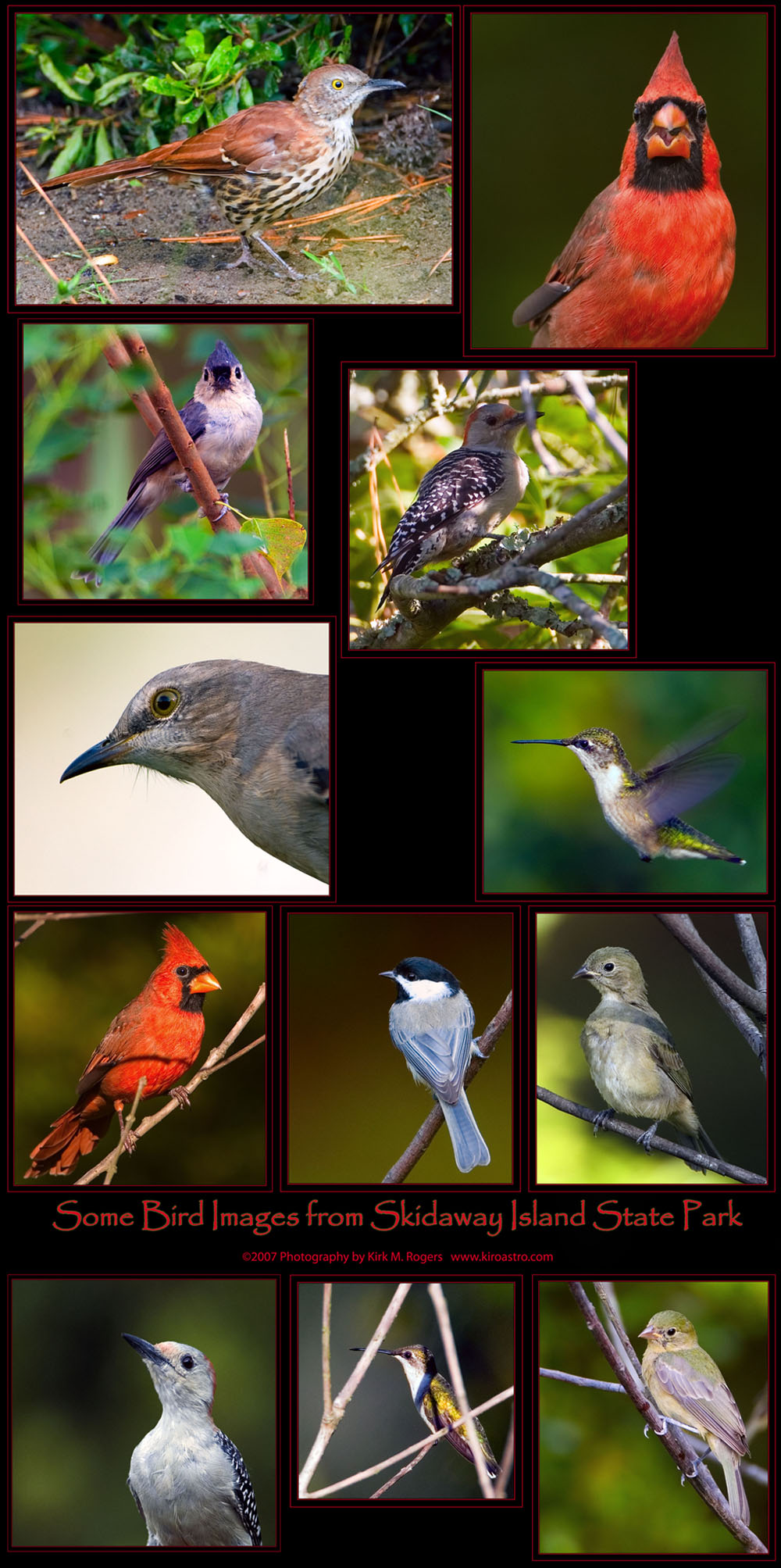
|
|
We entered The Landings and discussed where to go with what time we had left. Diana asked if Iíd ever visited ĎThe Rookeryí, a spot where many wading birds nested and raised their young. I never had so she
directed me on where to go and off we went. I had my GPS with me as usual and once we got to the site I bookmarked it so I could find it again. Getting around in The Landings isnít all
that difficult once youíve driven around a bit but I the meantime if you donít know here youíre going it can be confusing.
Turkey Vulture
|
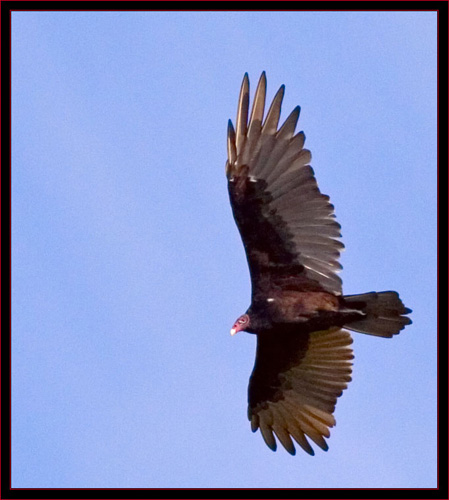
|
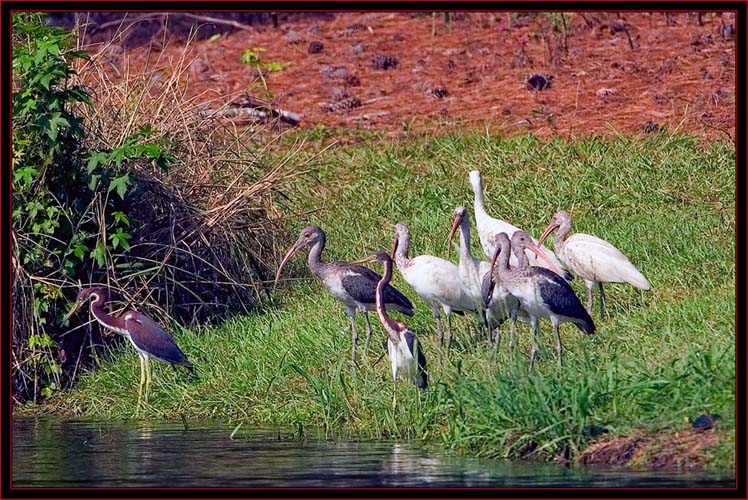
|
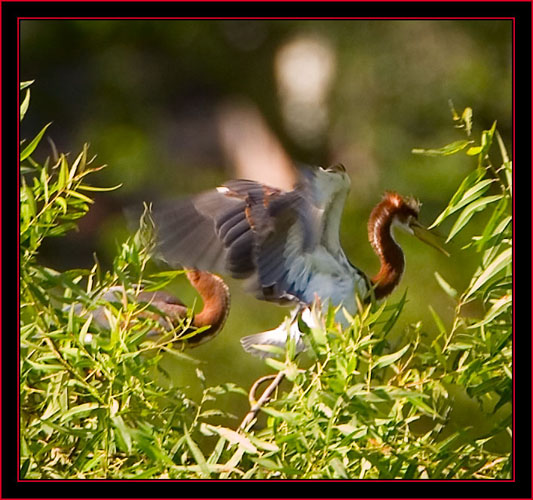
|
The Rookery was pretty neat; in essence youíre standing on a paved path between the backyards of two houses. This didnít make me especially comfortable as we walked around,
but nobody minds apparently as long as one behaves in a civil fashion. The pond is before you and the birds are perched in the trees on an island in the center so youíre not really close.
Close enough to image at 700mm to obtain some good shots but nothing like headshot close. There were some Wood Storks, many Tricolored & Great Blue Herons, Great and Snowy Egrets,
Anhingas around Ė all the usual suspects but nothing especially different or out of the ordinary from my experience. This was the largest group of Tricolored Herons Iíd viewed at one place and a group was
hanging out along the shore.
Immature Tricolored Herons in the trees. |
|
As we viewed the area to our close left a Cooperís hawk swooshed in to strike a pair of Spotted Sandpipers that we hadnít even noticed. The
hawk missed its quarry and the sandpipers took off like the gates of Hades had been opened. The hawk fly into a nearby tree and I was able to get several frames off
with my handheld camera before the bird flew off into a tree that was entirely backlit.
A Cooper's Hawk at the Rookery.
|
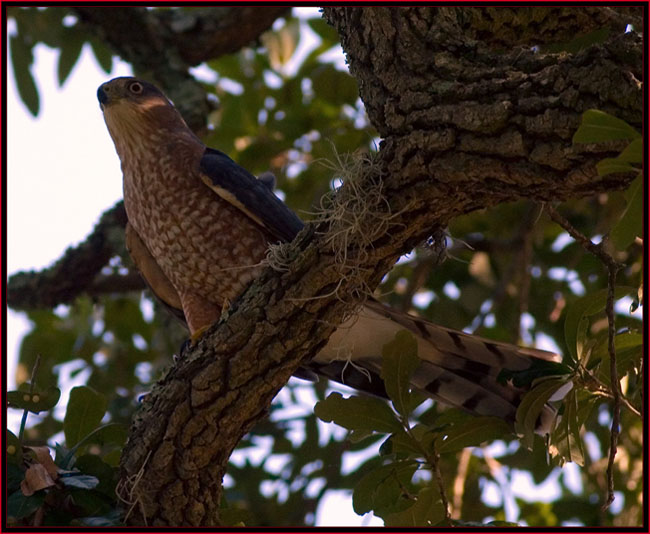
|
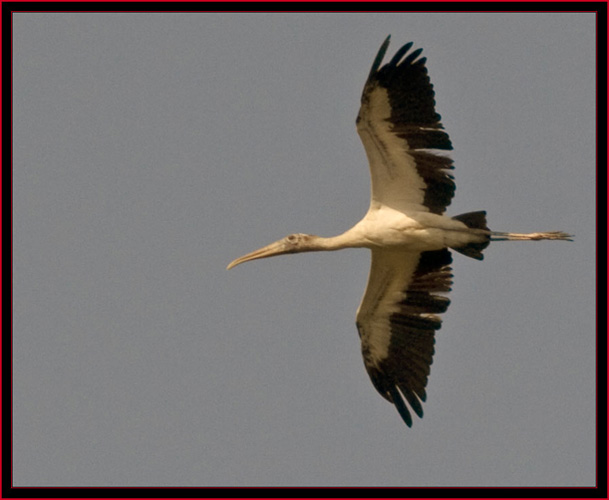
|
The Rookery was worthwhile and we practiced some fly by wing shots as the birds moved around. I got some decent but distant images of Wood Storks flying around which
were new to my archive and fun. After a time we decided to leave as it was getting later in the morning and I needed to get to work.
|

|
|
Diana writes the ďBirderís Eye ViewĒ column for the Savannah Morning News and she indicted sheís doing a compilation of her articles with the thought of publishing. She is clearly an
expert birder and I enjoyed spending time with her. As I dropped her back at her vehicle she wrote some notes for me, one indicating the time and place of an Audubon bird walk she
was running on Tybee Island the next Sunday, another about a local camera group meeting sheís involved with. As we said our goodbyes I told her I planned to join her for the Tybee walk.
If you ever visit the southeast and find yourself in circumstances similar to mine, you should feel free to contact Wilderness Southeast and arrange a guided tour. It would make your field time that much more productive and if youíre fortunate, you'd most likely end up with a guide as skilled as Diana. I would recommend her and this organization without equivocation. |
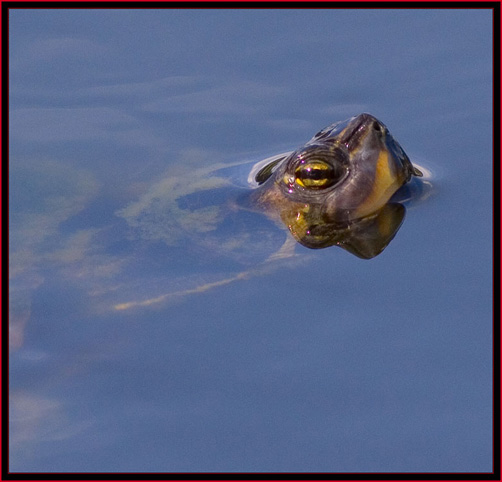
|
Saturday September 8th
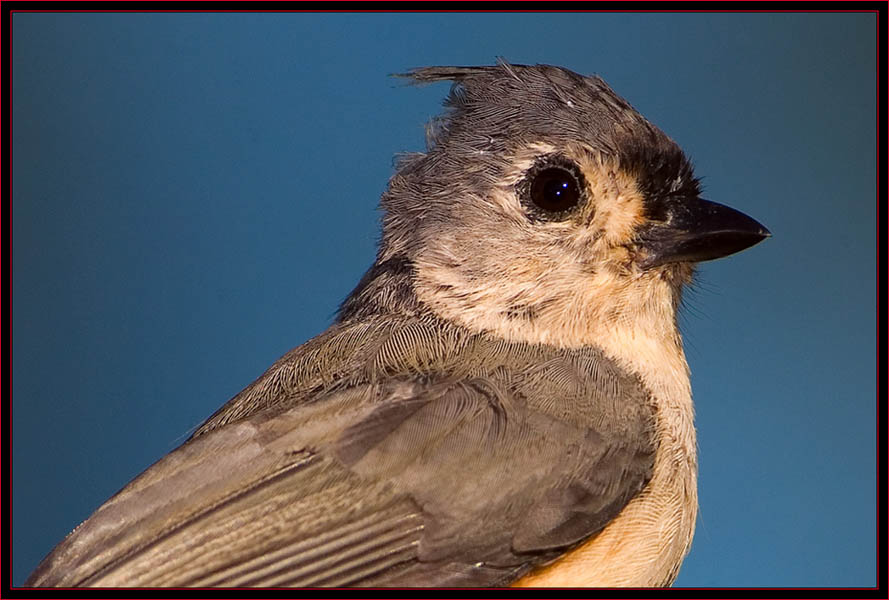
|
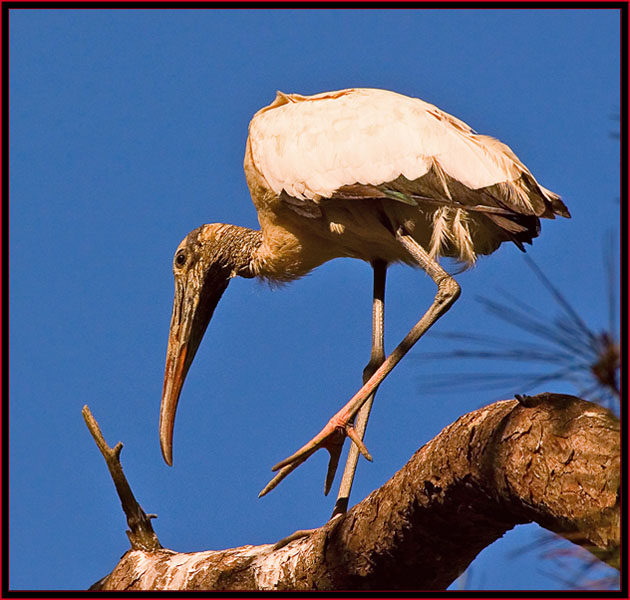
|
The area had experienced significant rains and high winds over the Labor Day weekend and the water level was high. Iíd become aware that it appeared to bring with it a bumper
crop of mosquitoes and other stinging insects and they were becoming bothersome. Little did I know what was in store for me before these trips in and around Savannah were through...
I was a bug-bitten, scratchy mess before I got back to Maine. These insects werenít troublesome on the job, but the places I frequented with my cameras led me to believe I
was a popular individual.
Wood Stork at Priest Landing... |
|
This morning I imaged much the same birds in the same locations as the day before, starting with Priest Landing. It was different lighting and angles at times but much the same overall.
I went back and found the large spider and took a few exposures of this beast. The spider remained in the same location with a hugh web stretched out between two trees. I tried to get a better
angle on some treed wood storks and in the process flushed some more herons out of the trees near the trail.
The image at right really doesn't do this female Golden Silk Spider (Nephila clavipes) justice... It was quite large. I looked this creature up in a field guide which indicated they grow to 7/8-1 inch - yeah right - not in Georgia... These spiders are also known as ĎBanana Spidersí, not so much for their color from what I found, but because of the hue of the webs they weave. In the south they have been known to have over a five inch leg span with bodies that are quite large. I didnít measure this female but I would estimate the abdomen was around three inches in length. The web this spider created was perhaps spanning six feet between several trees. Everything about the spider and web was quite large and I was impressed with seeing this assembly along the trail. Thankfully it was off the trail, not on it, so Diana didnít have to walk through this web when we first spotted it yesterday... |
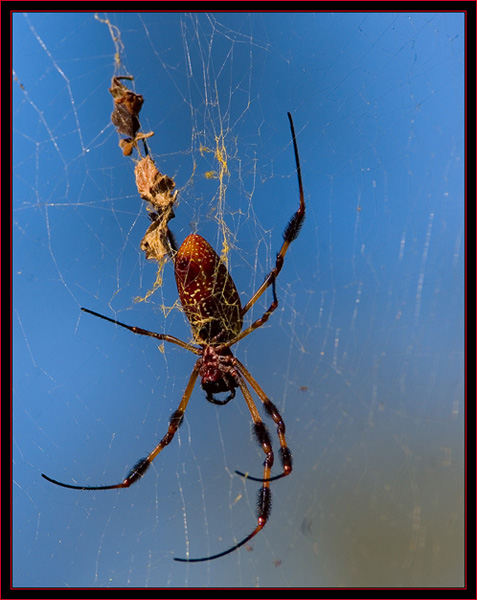
|
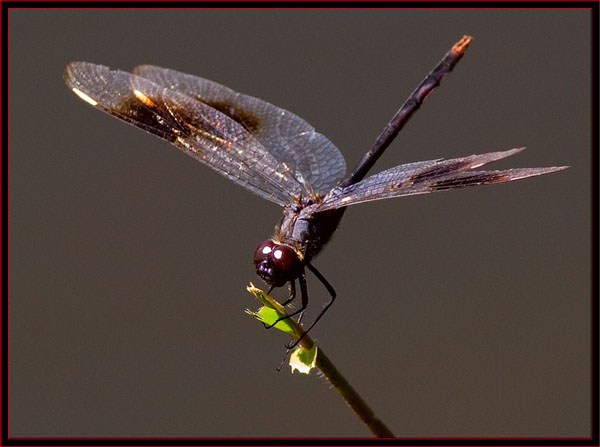
|
Afterwards I planned to visit Skidaway Island State Park for a short time hoping to see some more male Painted Buntings to photograph. I didnít stay long as I
had things to do on the work site and the sun was rising higher; overall it was a brief and enjoyable start to the morning.
|

|
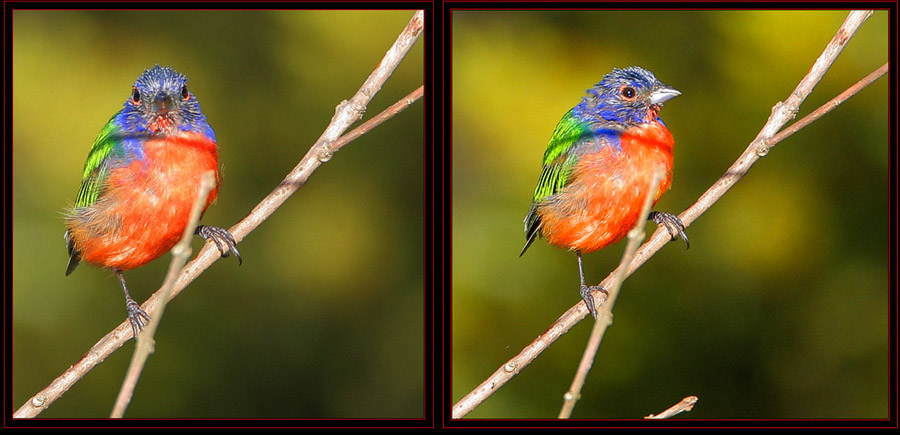
|
|
Shooting in raw will present new challenges and workflow issues when enhancing Ė you'll require a raw converter, perhaps a later version of Photoshop to handle the files &
lots of storage for example, but once you get there the
benefit is significant. I canít imagine shooting in anything but raw format anymore and this morningís example only reinforced this fact. Keep in mind as you view the images in this article that you are viewing
the significantly reduced jpeg versions created from the layered, master files. If you were to view the 100% original, the impact in some instances could be considered astounding...
Carolina Wren at the State Park.
|
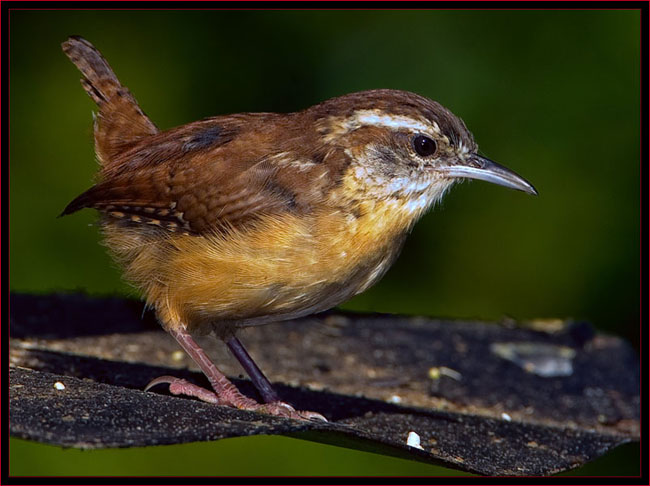
|
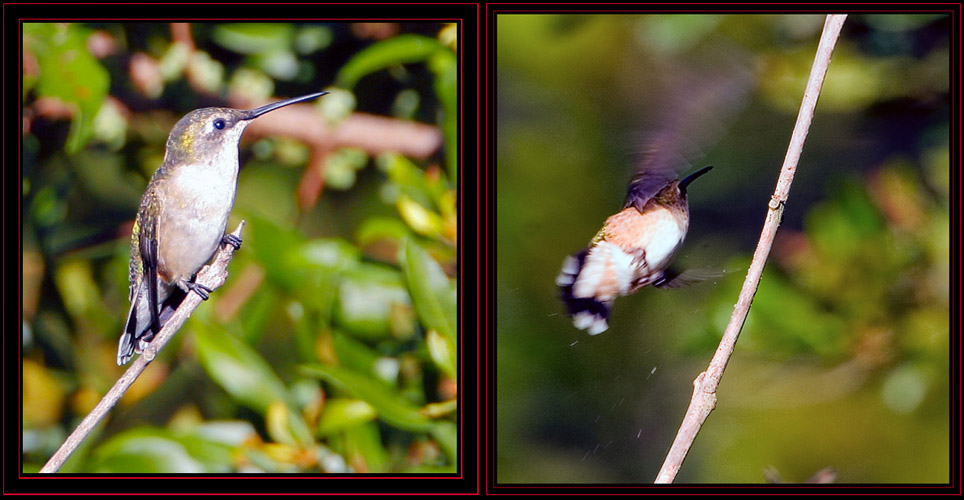
|

|
Afternoon at the Savannah National Wildlife Refuge
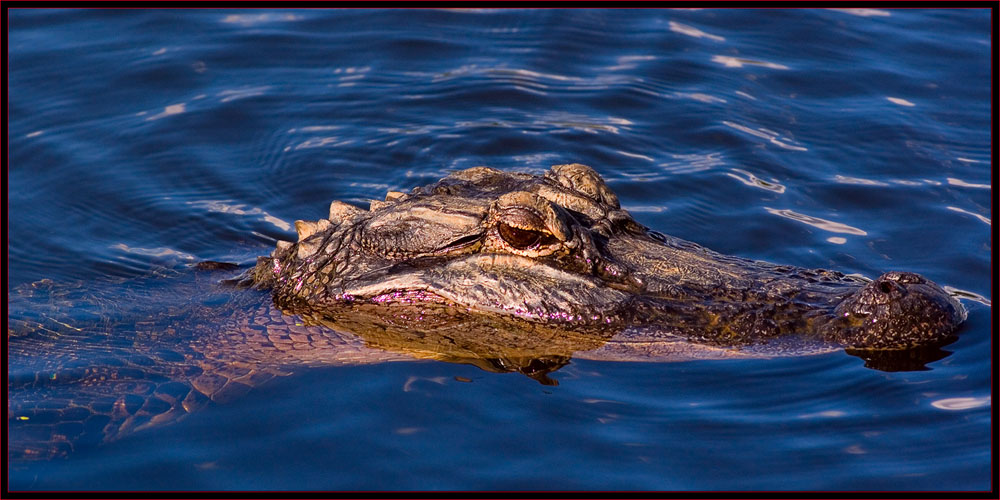
|
|
Later in the day when I had accomplished my work related tasks, several hours of daylight remained available and I decided to take a ride around my old haunt, the Savannah National
Wildlife Refuge(SNWR), not far across the river into South Carolina. I drove there from Savannah but learned the refuge is fairly close to the airport area, perhaps eight or
nine miles from where I was staying. Once I got there I bookmarked the site on my GPS; later this really simplified things when getting around.
Great Egret at SNWR.
|
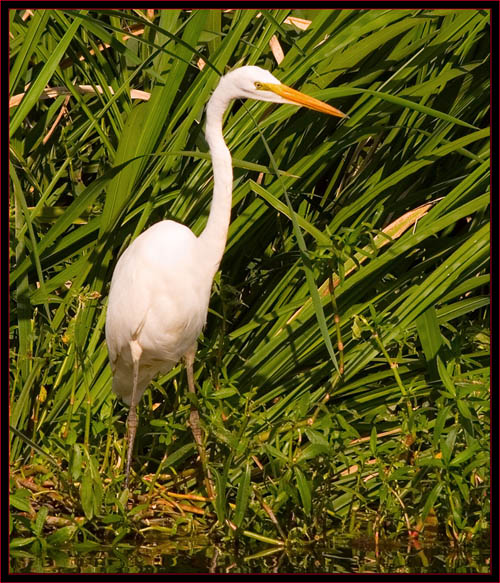
|
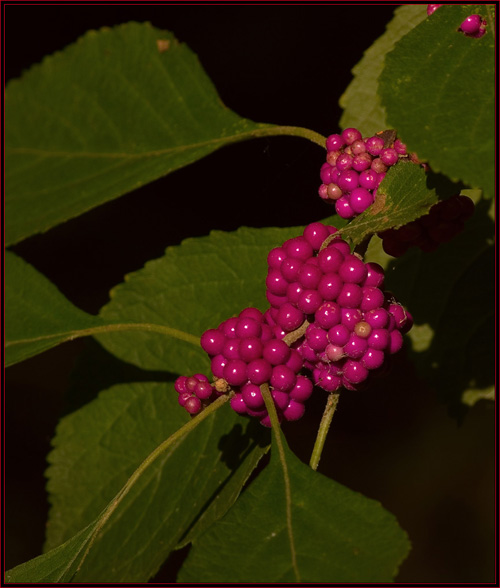
|
September in Maine can bring a mixed bag of temperatures but as the season moves into fall a definite cooling trend starts to emerge. It may have been cooler in Georgia in September when
compared to July and August, but Iíll tell you what Ė it was hot... each day the temperature got up to the mid to high ninety degree range and those of us from Maine werenít especially
comfortable; it was warm and muggy. One good point about the SNWR is you can travel the Laurel Hill Wildlife Drive in lieu of striking off cross country and still get a good overview of
whatís around. I like this because you can stay cool in the vehicle on occasion if the heat becomes an issue.
|
|
It appears to me that many folks traveling the Laurel Hill Wildlife Drive never take time to even get out of their vehicles at all. They drive quickly over the four-mile gravel road and off they go.
I never took a great deal of time to explore that many trails one could take in the refuge but if you take some time to get out and walk along the water and vegetation to investigate the swamp areas,
youíd find a lot more going on than you may realize. Most check the water for alligators Ė this appears to be the most significant draw. However, gator shots all look fairly similar Ė sometimes
you can catch one out of the water sunning and get a full view, but mostly what you see are the eyes or perhaps the head projecting from the murky water and not much else. In the end result you
can image multiple individuals but collectively, the images look much alike.
An immature Common Moorhen forages among the lily-pads at SNWR.
|
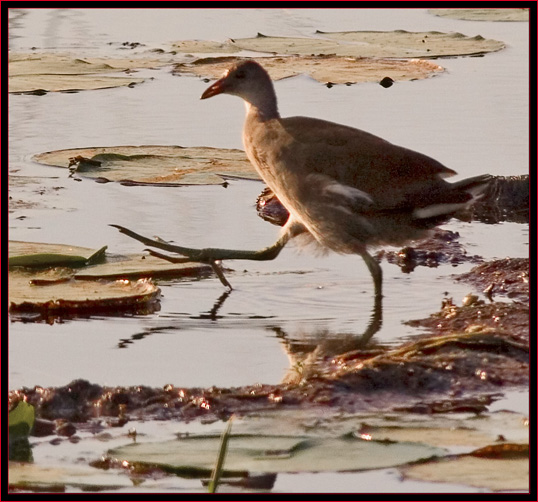
|
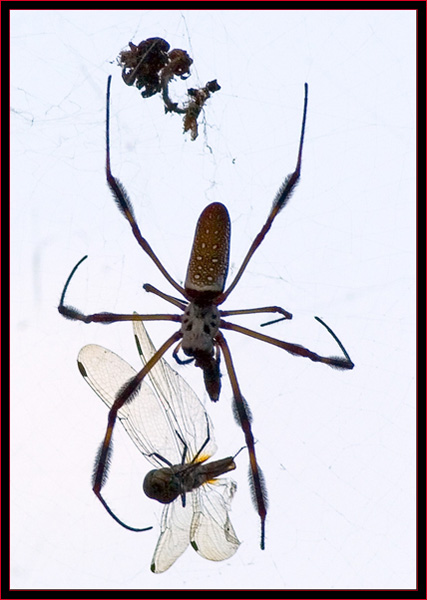
|
I traveled the wildlife road anticipating being somewhat isolated and alone in the refuge. I was hoping to see some migrating birds that werenít around in my last visit in June.
Actually, in the time I was present I didnít see many songbirds around at all although this clearly is no indication that theyíre not all around the area. Those I did see were distant
and in the areas where the road entered the trees where one would expect to find these birds, it was so dense that the likelihood of obtaining a successful image was pretty much
non-existent. I think it could be done if you set up a shoot zone and remained hidden to a degree with a flash extender, but unless you were phishing or using some other method
to draw the birds in, I didnít see enough activity going on to attempt this. The pay-off for the bug bites received in this effort for the time it may take appeared marginal from
my view. I did see some smaller, warbler sized birds and stalked them for a bit but it was in the darkened areas and they never broke cover enough to get an exposure off, even as an identification aid.
I came across this spider with a dragonfly capture on one of the smaller side roads where you can park and walk around. |
| It was enjoyable though. Slowly meandering along the road listening and looking to see what may be around. I didnít see many vehicles but in the time I re-visited the refuge there were enough around to be an issue at times. Anybody going ahead of you definitely flushes the birds for a time when you get ready to travel through. You may be stopped alongside the road with the tripod, lens and camera mounted attempting to get a shot; some people will stop and with a bit of stealth try to find out what youíre doing. Others will drive by and bring an abrupt end to the session as everything near the roadway skedaddles. The speed limit in the refuge is 20 miles per hour; I traveled ever so slowly on the gravel road so I could look and listen. In most places a vehicle behind you cannot pass so there are times when you must accelerate to let other folks by. I suppose another way to look at this would be if you were a serious birder or wildlife aficionado, you wouldnít be driving on this road in the first place, but out in the swamps or woods on foot along one of the many trails... |
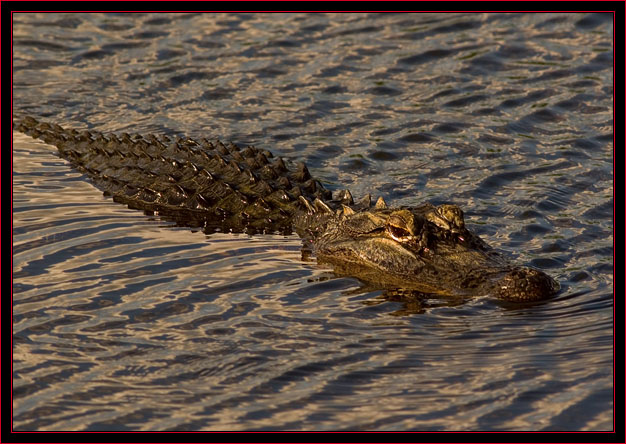
|
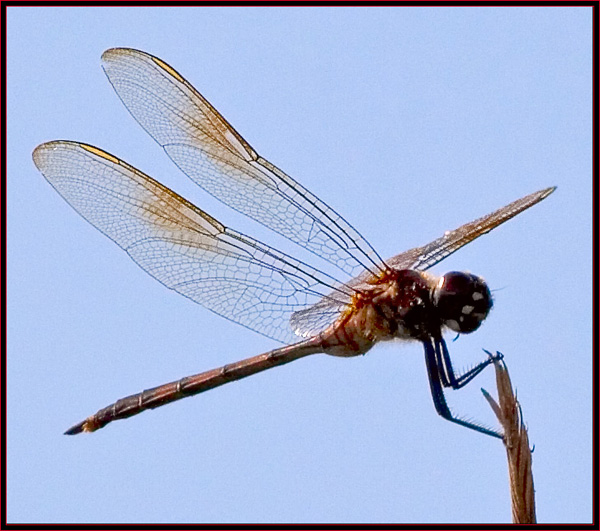
|
Once I completed the four-mile circuit I got back on the highway and headed to Pooler and the apartment for the evening. It had been a good dayÖ
|
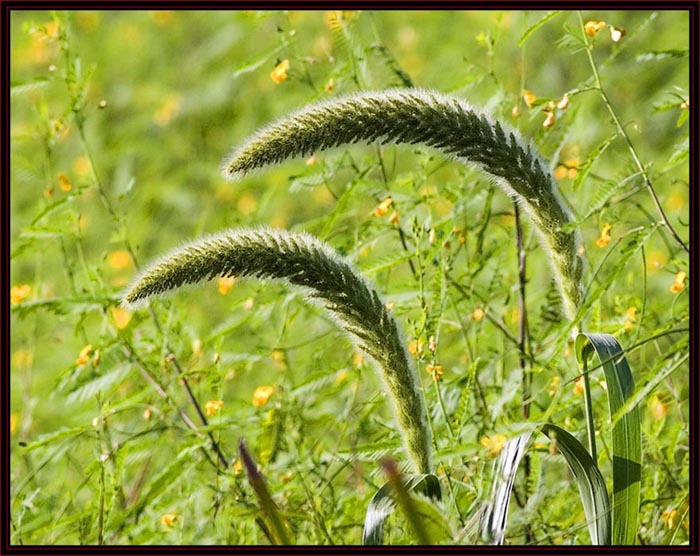
|
Sunday, September 9th
|
On Sunday morning I was up with no particular plan of action and considered if I even wished to get out with the camera gear. I definitely intended to meet Diana on Tybee
Island for the bird walk she was conducting, but this wasnít until early evening so I had some time to do as I pleased.
In the end result, I decided to go for a ride around the area near where we were staying in Pooler. I drove around some back roads checking the tree line for birds and looking over the territory. I ended up fairly close to the Savannah NWR, figured it was free and I had time, so why not take a look? It was morning and Iíd learned previously that different times of the day can bring different sights so I headed for the entrance to enter the wildlife drive. This turtle in the refuge climbed up on a log to catch a few rays..
|
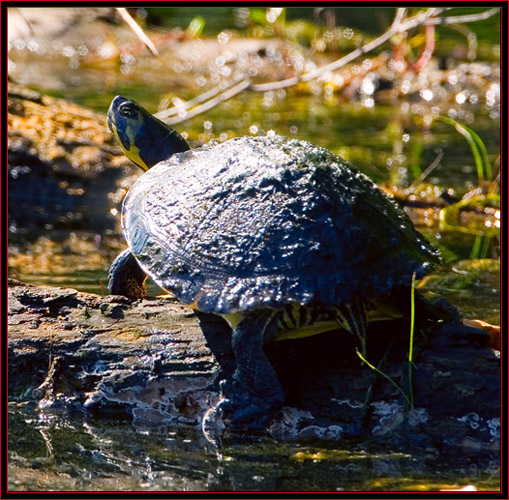
|
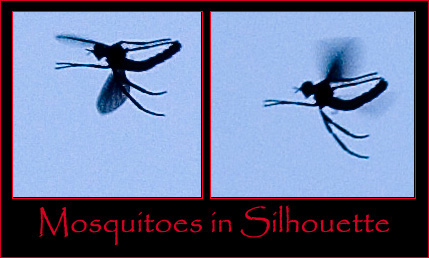
|
While I was walking in the refuge I viewed a clearing with blue sky beyond and mosquitoes flying around planning to greet me. The images at left were taken about ten or twelve feet away from the subjects with a 400mm lens handheld.
Have you ever tried to pan a skeeter on the wing? Give it a try sometime, itís quite humblingÖ
|
|
It was another beautiful day with the promise of sunshine and that warm Georgia weather weíd been experiencing. I was still scratching from Ďskeeterí bites the day before
so was hoping to not have a replay of this again. I took my time meandering through the refuge stopping when something caught my eye or when it looked like it may have potential to photograph.
One aspect Iíd thought about is that as many times as Iíd been in this refuge I rarely took time to shoot any scenic photographs. I rarely bothered to change lenses from the longer focal length lenses or had time to do much general photography as I drove through. This trip I wished to change that and determined to get some landscapes while in the area. |
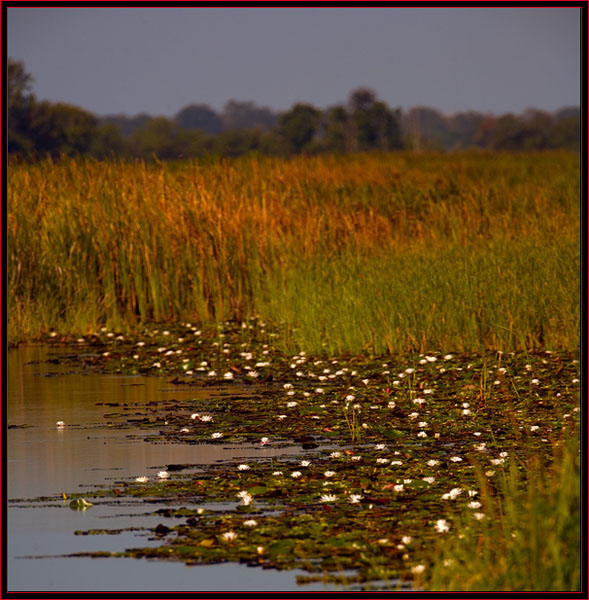
|
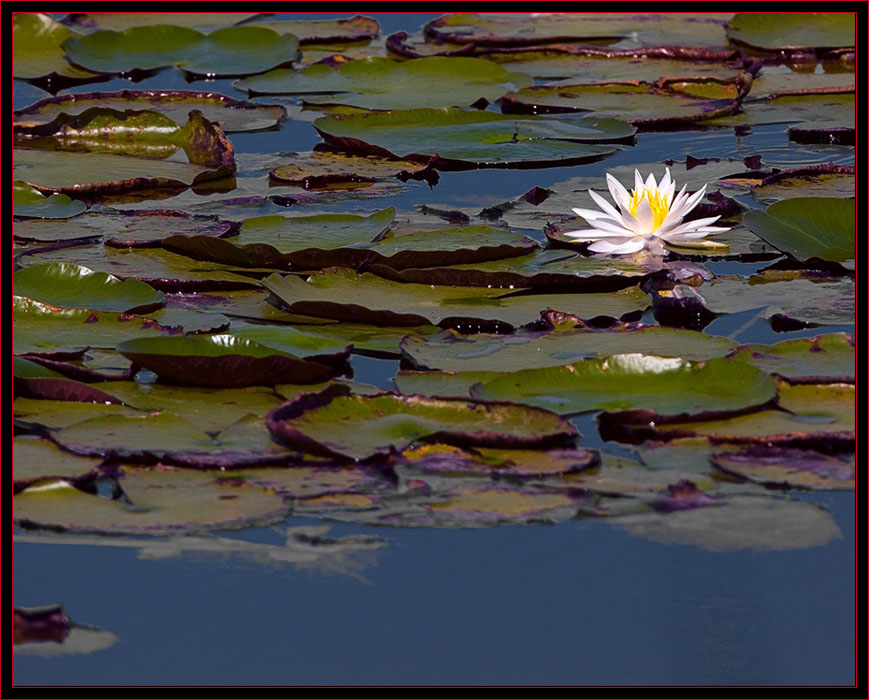
|
The refuge clearly has a natural beauty with the Spanish moss filled trees, rice lagoons and swampy areas with a plethora of Lilly pads and other growth. You can look at all this and
know there are many photo worthy subjects to be found if one takes the time and practices patience to seek them out. Unfortunately, time and to a degree, patience is in fairly
short supply for most of us and I wasnít greatly interested in hiking the trails this morning with the snakes, spiders and mosquitoes out in force.
|
| Iíd notice quite a bit of activity on the lily pads and this morning I took time to get some new images of birds as they foraged in the distance. Several immature Purple Gallinules were out and about but I didnít notice any adults. I'd obtained some images of adult gallinules when in the refuge on other visits but all were quite far away. |
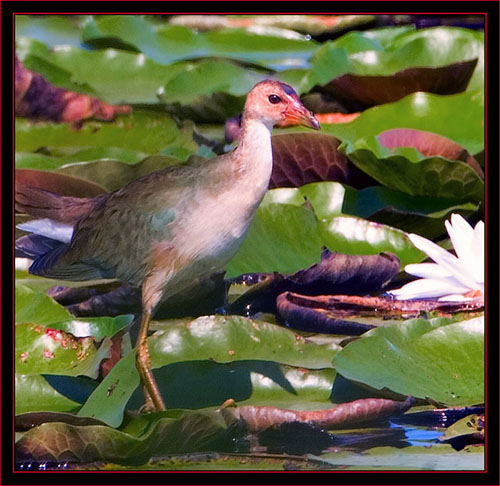
|
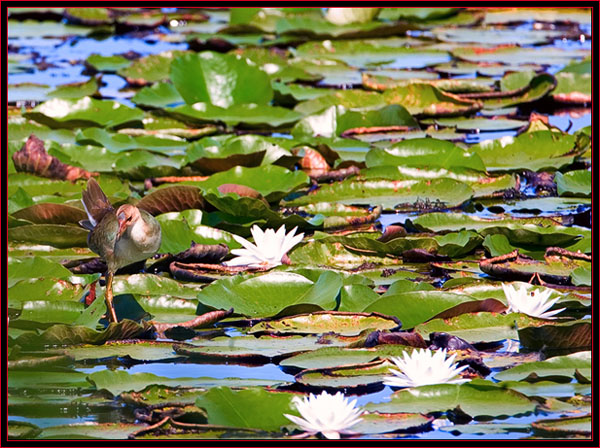
|
Imaging birds in the lily-pads means that the subjects are fairly distant from the camera set up. The growth alongside the roadway is high Ė tall enough to be problematic and there is little chance of imaging any birds close by because you cannot get a clear field of view. So I selected some that were far enough out to allow me to shoot over or in some cases, between the roadside vegetation. A lot of these images displayed the fact I wasnít successful in keeping the front view clear as the wind blew the reeds around. But I did manage to get a few that were acceptable. |
|
I viewed some gators, dragonflies, more of the same species of spider Ė must be their time of year I suppose. The little stagnate pond I always check had appeared free of
gators when I went by yesterday, but today this wasnít the case. There were three young gators sunning themselves on logs this morning and a few turtles besides.
As you view these images itís difficult to ascertain an image scale, but these gators out of the water were perhaps three or four feet long.
Another Golden Silk Spider - this one with company. The smaller spider is a male, probably her mate.
|
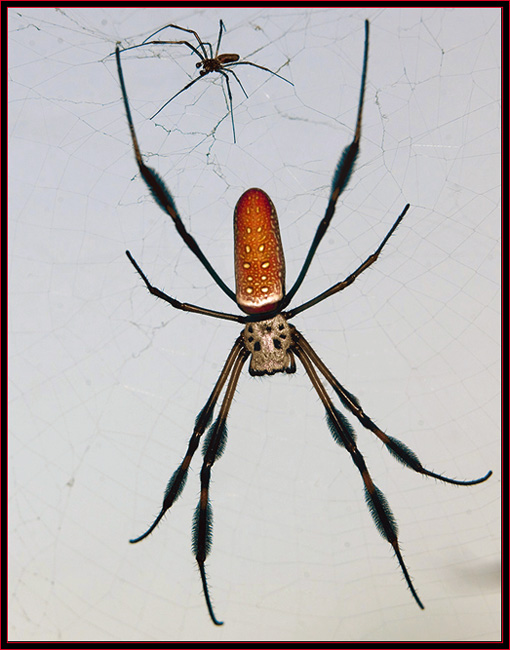
|
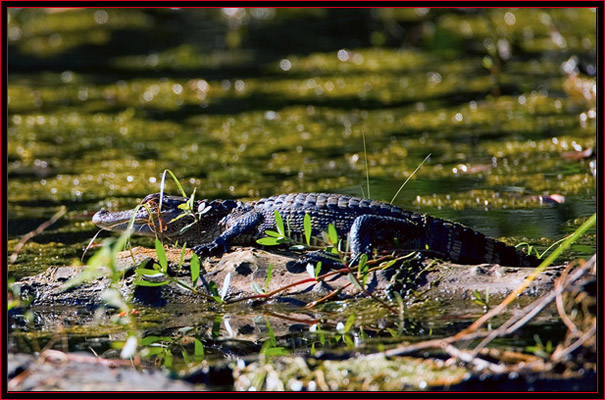
|
After a time I got to the end of the refuge drive road and decided to head home to download the cards, take a look at the images and get prepared for the Tybee Island walk. |
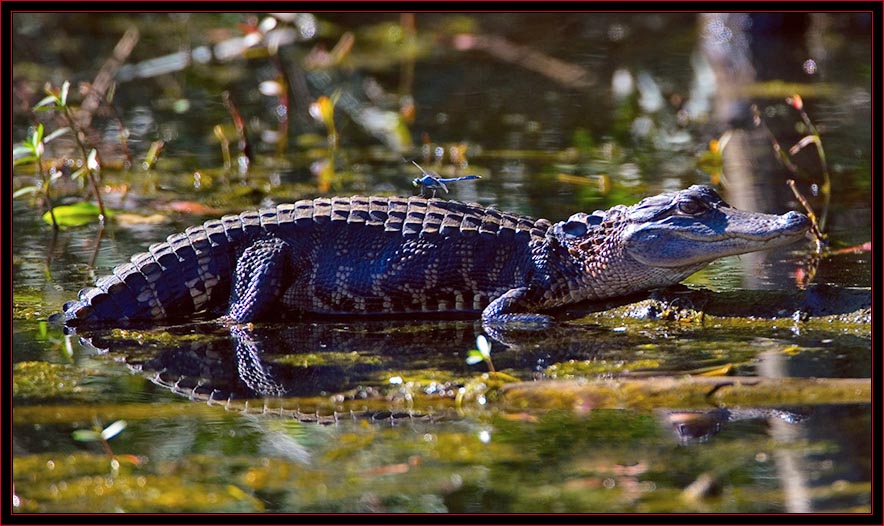
|
Sunday Afternoon Ė Tybee Island
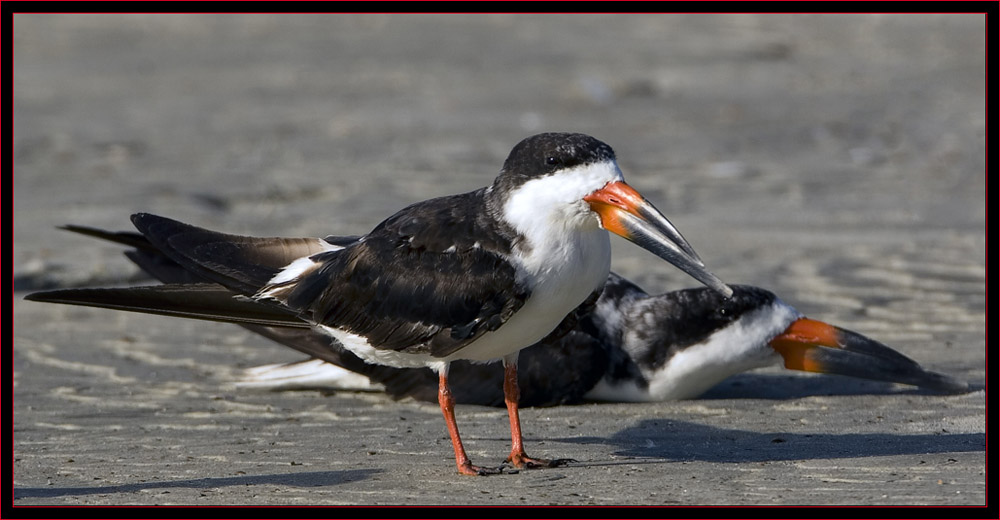
|
|
As I wasnít exactly certain where I was supposed to meet the group on Tybee Island; my plan was to leave plenty early and do some looking around on my own before we planned to meet.
In the end result, I got busy and didnít leave as early as planned, so when I got to Tybee I was right on time to get to the appointed spot. I was in the correct general area,
but couldnít locate the street Diana had indicated. I didnít want to miss the group leaving so I called Dianaís cell and within a few minutes she kindly got back to me and talked me
through and onto the correct road.
Tybee Island Light imaged from North Beach
|
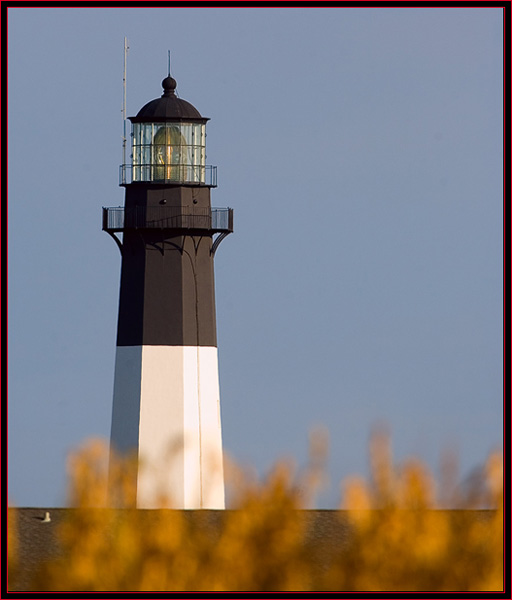
|
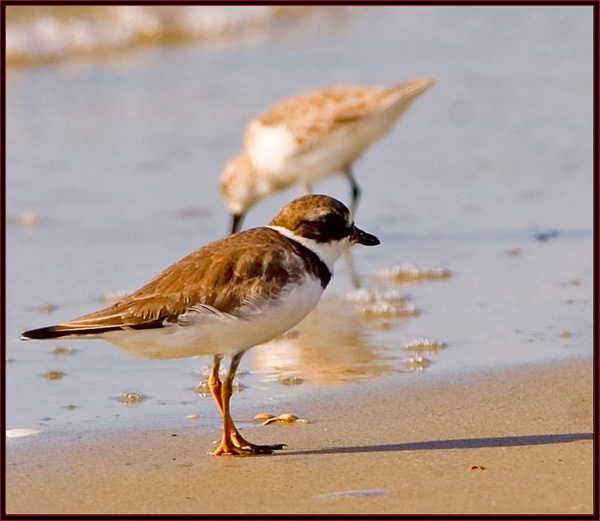
|
Our group consisted of perhaps twelve or fourteen people and it proved to be an interesting crew. Most of these folks lived on Skidaway Island I learned, some in The Landings.
One couple lived close enough to be neighbors of my friends Bill and Rosalie, but they hadnít met I donít believe. Diana briefed us on her plan, to walk the beach in pursuit of
shorebirds and off we went. We checked the trees & bushes on the way to the beach entrance looking for whatever may be around.
Semipalmated Plover and Sanderling near the water's edge. |
|
Did I mention how hot it was? Well it was hot indeed and we were right out under the sun with no protection. There was a bit of a breeze which proved helpful but didnít do much to
defray the direct light. Iíd worn a head wrap in lieu of a hat to protect my head. With no visor, these are good and donít get in the way when working at the tripod. The down side of course,
is folks look at you like an old, left over hippie or something. Being a Harley rider, I have a supply of these and often wear them when imaging. Iíd rather have people think Iím a bit
whacky than have my balding scalp burned up in the harsh light...
One of the many Laughing Gulls we viewed
|
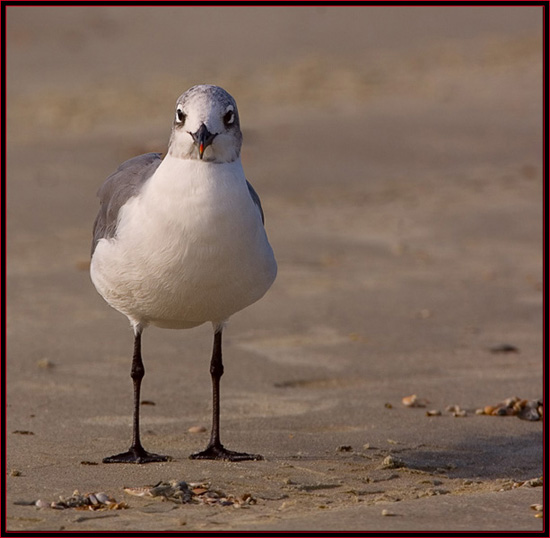
|
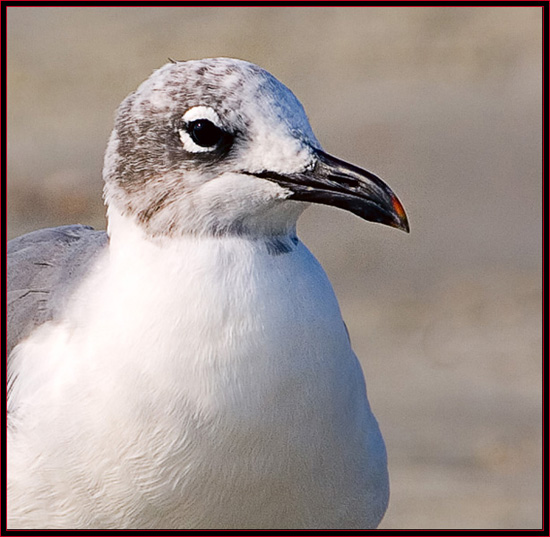
|
Soon enough we were walking on the sand and Diana was looking down the beach pointing out what she could see with her field glasses. She had her camera & 100-400mm Canon lens ready and today it was tripod mounted. As is my normal procedure, I had my tripod and 500 f4L lens mounted on the 5d with the 30d and 400mm f5.6L slung on a strap at my side - we were ready... |
|
We could see some dolphins close to shore as leaped and frolicked around surprisingly close to shore I thought. It would have been great to capture an image of one breaching but
as you never know when or where this would occur, it was next to impossible. I settled for some fin shots as they swam by to at least document what we viewed.
Dolphins close off shore
|
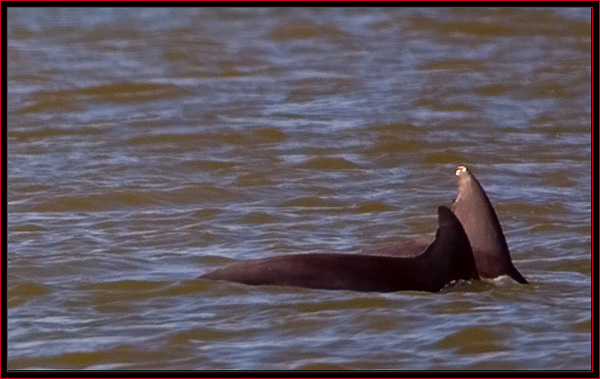
|
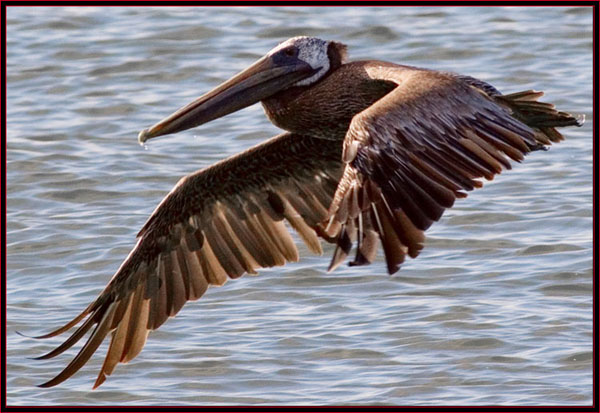
|
Out by the dolphins some Brown Pelicans were fishing and flying about Ė we viewed some of these birds making their dramatic full speed dives into the water as they went after their prey. I took a few minutes with my handheld set up to get some fight shots as the lighting appeared good for this pursuit and found later I good some nice shots. |
|
We viewed a fairly large group of birds in the distance and Diana had us observers on the move toward the flock. There were many gulls and terns around that we
could make out as well as some smaller shorebirds individually or in small groups Ė a few Willets, Semipalmated Plovers and Sanderlings. As Diana studied the
group with a spotting scope, she indicated there were some Black Skimmers on the sand in the flock. I was really pleased by this news as these represented
one of the species I was hoping to photograph as they are fairly common in the area.
Black Skimmer in the flock
|
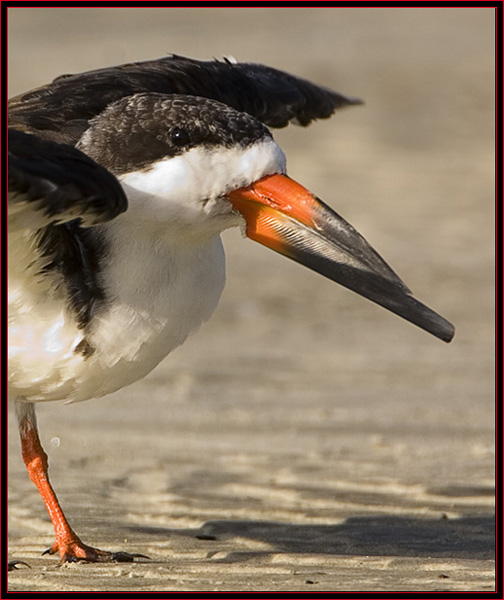
|
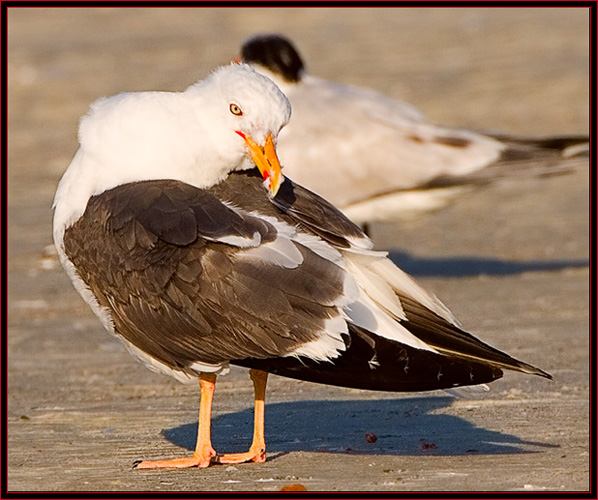
|
This was all pretty neat and Diana and I broke off with our cameras for a bit as we approached, getting some exposures as we moved closer. After a time we decided to Ďpush the envelopí a
bit and kept moving closer trying to get a larger image scale. After a time we entered the flocks Ďcomfort zoneí and off they went, moving down the beach or taking flight heading seaward.
The only way to be successful with this approach would be to lie down and creep slowly across the sand staying low. The birds would know you were there but may not perceive you as a threat.
Because we had tripod mounted gear, we didnít really consider this as an option.
A few of the birds in the gaggle included several examples of Lesser Black-backed Gulls and I was able to isolate and obtain several images of these. |

|

|
|
Weíd spent some time photographing the three tern varieties we could see, Royal, Caspian and Sandwich and I obtained some images I was pleased with. Diana was
shooting continually as well and I have no doubt she returned with a fine group of images as well.
A group of Royal Terns
|
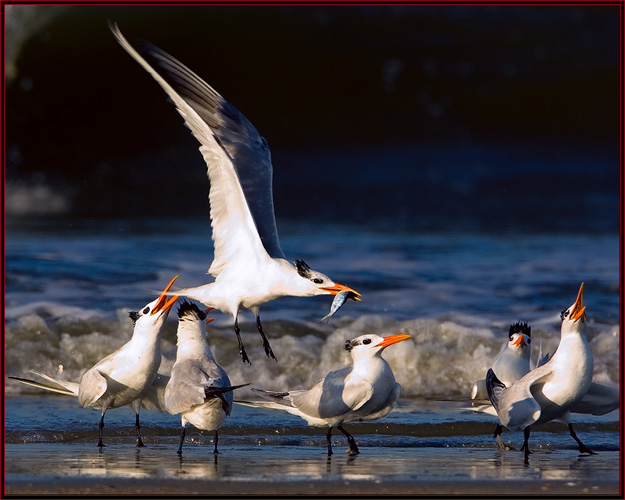
|
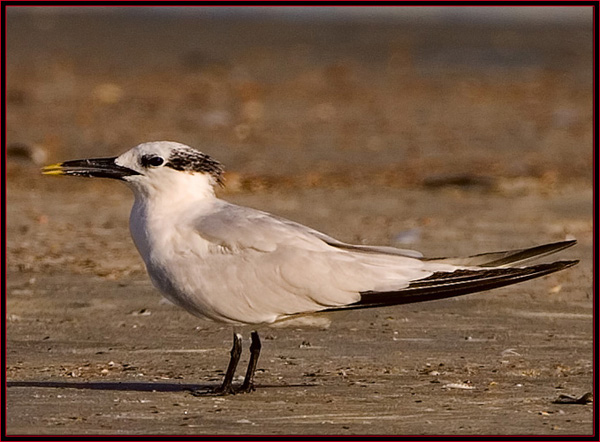
|
This walk took several hours and after a time we headed back towards the entrance and our vehicles. We trekked out on a boardwalk to a raised gazebo over the water to see what we may find.
There was a sizable group of White Egrets across the way, but mostly what we found was a whole bunch of skeeters and it wasnít long before everyone got off the boardwalk...
Multiple examples of Sandwich Terns were on the beach this day. |
|
It appeared to be the usual practice for everyone who wished to attend join the group for dinner afterwards. Diana knew where she wanted to go and we drove over to the restaurant.
Parking was a definite issue and we had too many vehicles without places to park. Diana went inside to see if the facility could handle the group, which they could, so we got
creative and found places for all the vehicles, including my pickup.
A group of Caspian Terns resting on the beach
|
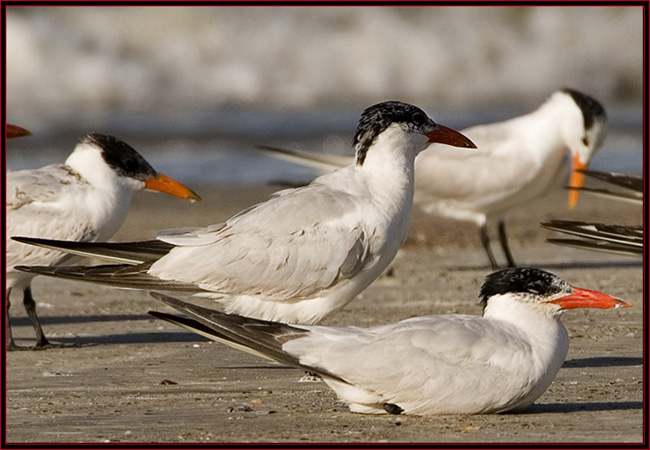
|
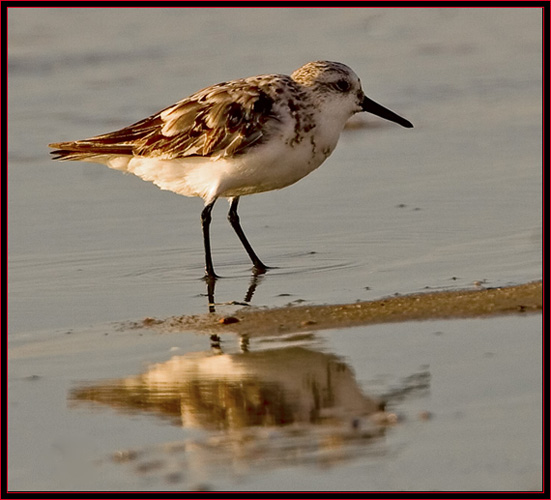
|
We stayed at the bar for a time and everyone had a drink of their choice and talked to whoever they happened to be grouped with as we were spread out. After a time the wait staff came over
indicating our tables were prepared and we moved outside onto the deck, which turned into a pier that went down to the water with boats tied up and moored nearby. This wasnít bad but we were
split up to a degree because the picnic table styled seating couldnít accommodate our group at one table. The deck was full of people and seating was at a premium as folks ate, drank,
talked and listened to the guitarist as he played and sang to entertain the crowd. As we were just settling in and starting to peruse the menu choices a major group of mosquitoes
came in to the disdain of all... This place went from full to near about empty in ten minutes or so. These skeeters were nasty and plentiful - you couldnít sit still more than a
few seconds without slapping and scratching them off. I felt badly for those wearing shorts. Jeans didnít help much, but those with shorts suffered much because you had even
more real estate to protect from these nasty critters.
The restaurant staff knew they had to do something or the outside seating would soon be devoid of business... The deck was about vacant when they brought out a sizeable post mounted electric fan in an attempt to blow the skeeters out. Everyone moved to try to get within reach of the fan hoping for some relief. Diana, another fellow sitting with us and I moved to a table right next to the fan and I ended sitting with it at my back. This worked well but we still received many unwelcome visitors as we dined. The added guests created an early ending to the dining and as soon as everyone in the various parties were through they asked for their checks and beat it out of Dodge Ė anywhere was better than sitting on this deck under these circumstances... One of the few Sanderlings we viewed in the surf. |

|
Tuesday, September 11th - A Return to Tybee

|
| The next opportunity I had to get out with the camera gear came after work on the following Tuesday. Tybee Island isnít too long a drive from the Victorian District of Savannah where we were working so I decided to head back over after work before going home. I didnít expect to see much different of consequence but thought Iíd check it out. After the end of work day traffic dissipated, Iíd head back to Pooler. |
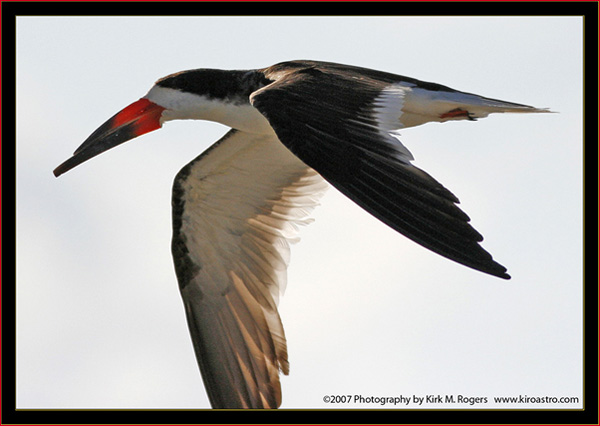
|
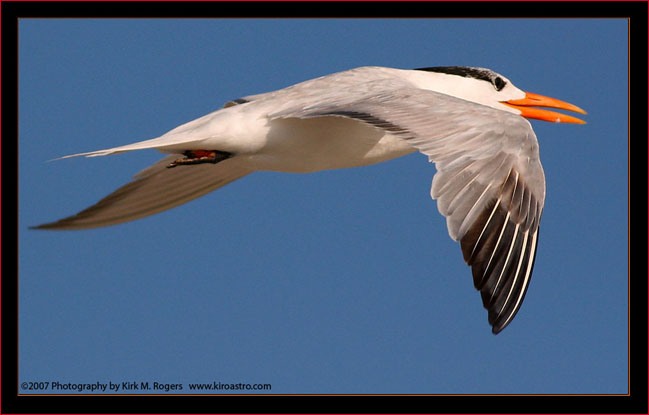
|
It was another hot day with harsh sunshine. As Iíd just been at Tybee a few days before, I knew what to expect for lighting conditions at about the same time of day. What I didnít expect was the high winds experienced once I got on the beach. I thought this a bit odd actually; not wind at the ocean of course, but so much wind with little indication of it inland. I parked in the same spot as last Sunday and as I got the camera gear set up and ready to walk to the beach. It was calm with little breeze. However, once I crossed the dune line it was blowing a mini-gale. I walked out to where weíd viewed the flocks of shorebirds. This wasnít bad with the wind and sun at my back. This changed considerably when I started the trek back. I was concerned my lenses were going to get sandblasted as I could see the sand coming across with the gusts and it was really moving. The end result of all this was I didnít stay long and cut my visit short. |
| I did take a few tern wing shots and was fortunate enough to find some more Black Skimmers. I was able to obtain a few better wing shots then I had in file for these birds. On the way back I noticed that the gulls and other birds flocked with them stood together facing the wind as the sand scudded by. I watched these birds for a time and they adjusted with the gusting winds somewhat but really didnít vary much from facing windward and letting it blow by. I thought it would make an interesting image if I could portray the scene as I was viewing it. The obvious thing would be to lie down; get down on the birds level to capture the windblown sand action. It did not do this however; I was concerned with orientating the lens like the birds, down low and facing the wind. I believe my lens hood would be full of sand in quick fashion. I did kneel down and quickly took some shots Ė you can see the result in the next image below. This shot may not have the visual impact as seen naked eye, but one can get the feeling of the moment I believe. |
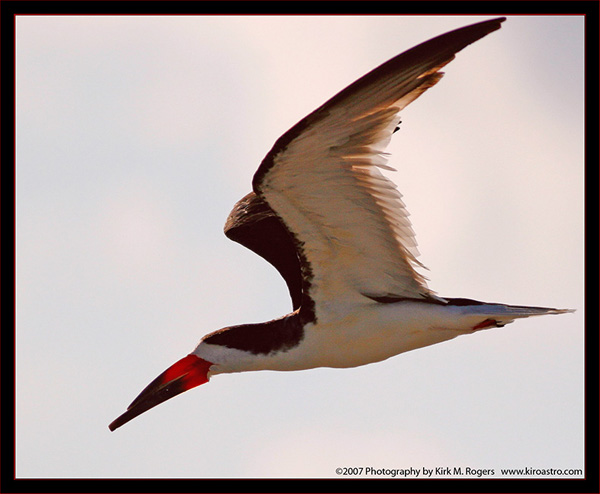
|
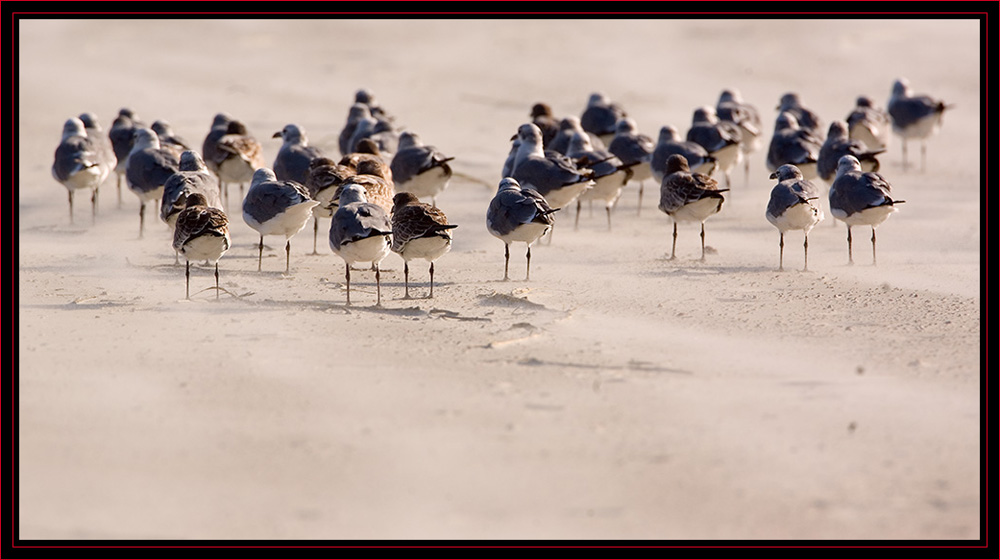
|
Wednesday, September 12th - Skidaway Island State Park
I still had an inclination to find some male Painted Buntings that I could get close to; close enough to produce a larger image scale then the photographs I had archived. Although these birds are fairly common in the area in summer, the only place Iíd viewed any on this trip was at Skidaway Island State Park - this became my destination for the morning.
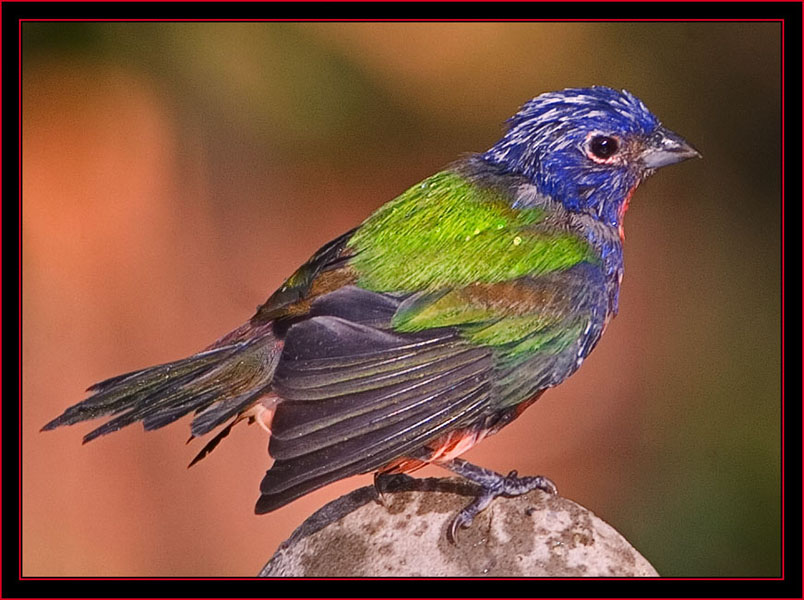
|
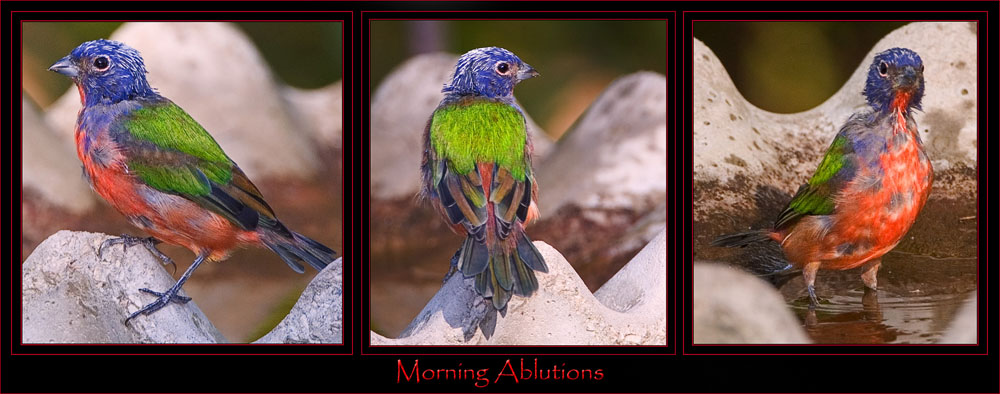
|

|
The park officially opens at 0830 hours and they have an entrance booth where you pay the fee on the way in. Because they had campers in the park, they never close the gate that Iím was aware
of and at this time of year, they donít appear to expect enough traffic at the park to warrant having someone in the booth all the time. In Georgia and as I later learned in Florida,
they get around this by having an honor system. The fee one pays when entering isnít to use the facility, but is considered a parking fee. So you drive in and park, visit the metal box
installation where you obtain an envelope, put your cash in and tear off a dated tag that you display on your windshield. If anybody cares to check, they can look at this to make
certain you paid as indicated by this receipt; or I suppose they could check the payment box to verify there was at least some money in there, which there would have to be provided
one paid the fee. The cost at Skidaway Island State Park was three dollars and I put this fee in multiple times when I was in the area.
Several Ruby-throated Hummingbirds were dive bombing one another in the area including this female. |
| Once the payment was behind me Ė I was the only car in the entire parking lot, I got the camera gear prepared, checked the batteries, compact flash cards & camera settings then walked to the feeders. I took my time and checked out several areas before getting there and walked down the trail a bit where weíd viewed the Red-headed Woodpecker. I did see one fly by high in the trees but nowhere near close enough to attempt a photograph. I walked over to the feeders and tried to get into a good position with a commanding field of view. |

|

|
The feeders arenít significantly far from the back of the building. One not insurmountable issue I had was which side to set up on because shooting at 700mm, no matter where I
placed the tripod I had to change the range switch on the lens between the feeders and the background. For example, the closest feeder was in range of the nearest setting.
Shortly distant from this it had to be switched to the middle setting and the background trees and bushes would require the 3rd setting Ė farthest away. This switch controls
the range of focus so you have to move it to achieve critical focus depending on the zone you were in. I did this as required during the session. None of this is a
compliant really because if you image a bird in the closest range you know youíve achieved a good image scale... I set up where I thought I may see the buntings,
actually standing inside a doorway Ė it looked close to perfect. However, this was short-lived... There were around a bazillion mosquitoes in this confined area as
well and they appeared quite pleased that breakfast had arrived. I thought to myself that I was never going to complain about Black fly
season (cousins to the mosquito) again in Maine after this trip....
Female Northern Cardinal. |
|
Because Iíd been in this location often of late I didnít want to keep imaging the same species of birds over and over unless something unusual was viewed. I didnít stay in the park long but it was
most successful morning. Besides finally obtaining the images I was seeking on the male Painted Bunting, I was also quite pleased to be joined by a Northern Parula. This male bird decided to
take a bath in a perfect spot for my camera set up. I have images of the Parula in my Bird Images Index that was taken in the May migration. These along with many warbler photographs,
were taken high in the trees in far from ideal circumstances. This opportunity was a significant improvement and I was pleased with the end result.
This beautiful Northern Parula represents one of my favorite photographs from my time in Georgia.
|

|
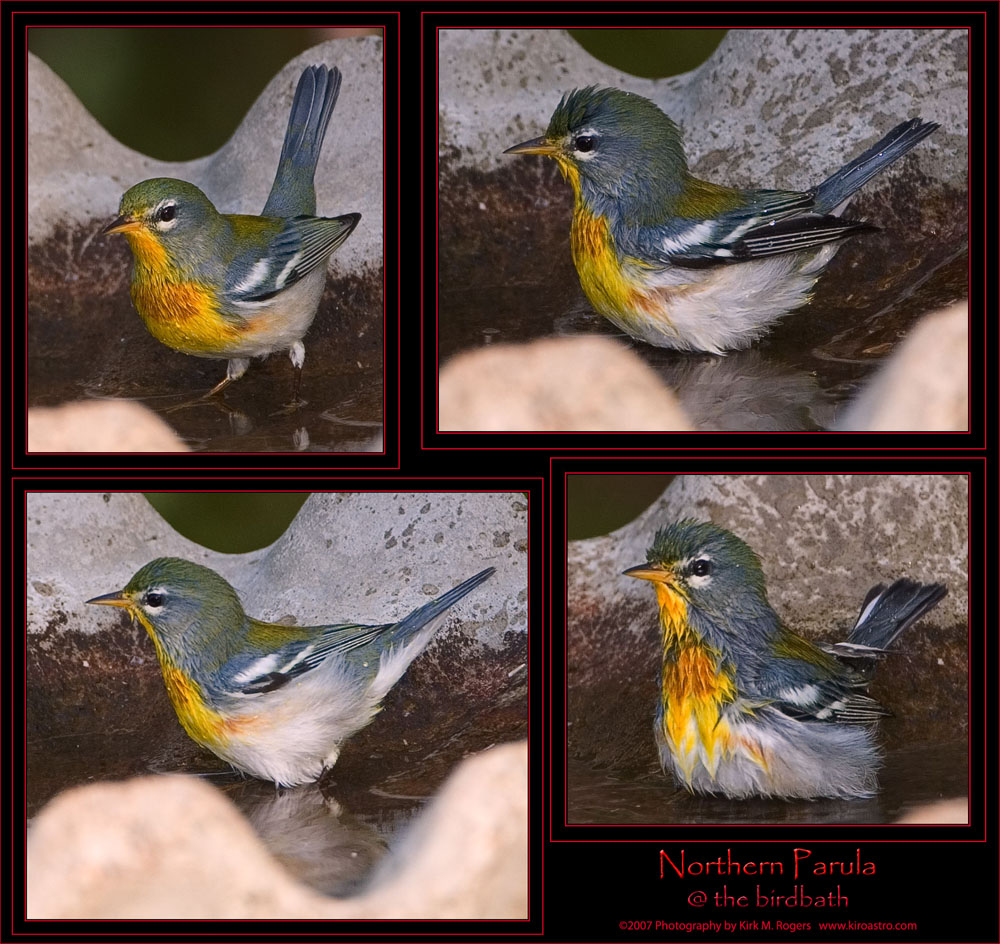
|
Thursday, September 13th - Skidaway Island - The Landings

|

|
It was another fine morning and I enjoyed meandering around some. I pulled into the ĎSparrow Fieldí, a somewhat isolated spot between some ponds that has some equipment sheds and no homes close by.
This field was established by local birders and they had some nesting boxes around and a few other bird amenities. Once I looked around a bit I didnít see much of anything and learned a worker
was in one of the sheds. He was driving a golf cart, the standard of transportation around The Landings if youíre staying within the facility and I figured whatever may have been around most
likely had been flushed. Except for an Anhinga by the water I didnít see much and decided to move on.
Having been here before I checked the usual spots in the immediate area. Thereís one pond where I knew many wading birds roosted. Last December when I was in the area I was astounded by the quantity of birds in the trees around this pond on any given morning, although they were generally the same species Ė great and some Snowy Egrets, Anhingas, Great Blue, some Little Blue, a few Tricolored, a plethora of Black Crowned nigh Herons occasional Wood Storks, etc. |
|
One species I wished to image last December I learned could only be found in one spot on the island Ė the Yellow-crowned Night Heron. These arenít as plentiful as the Black-crowned, but I did find some
around the pond this morning in trees not far from where I could approach. I set up and took a few images of these birds and some Black-crowned Night Herons nearby.
Afterwards I took a ride down to the Rookery to see what may be going on there. There were quite a few Tricolored Herons on the bank and I took a few shots of these. I viewed a lone Spotted Sandpiper and took several exposures of this bird. I couldnít get as close as Iíd wished and didnít delay long before packing up to head to work. |

|

|
Friday, September 14th

|
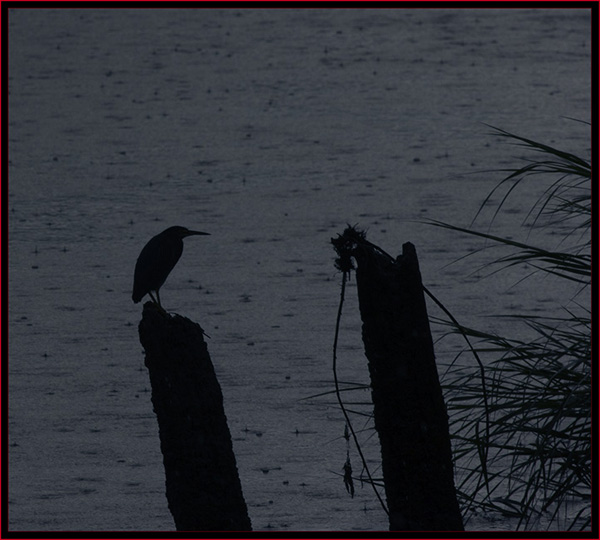
|
Iím pleased I took the time as I located a Green Heron. These birds arenít especially rare or unusual and they can be found in Maine in the summer. My experience indicates they are fairly shy and secretive and any time an opportunity presents to photograph one it should be taken advantage of. As I approached one of the bridges I spotted a Green Heron perched on a tree stump not far from my location. This was great; the only problem was it had started to rain and I didnít know how this would impact my efforts. I took a few images and determined to wait a bit Ė the timing was good because soon it stopped raining and I set up for some more images on this bird. There was also a Great Blue Heron stalking some fish not far away I took some exposures on this bird as well. |
| I was surprised to see a second Green Heron further on in the refuge. This one was crouched on the bank next to the water watching for fish to swim by. I viewed this bird make multiple stabs in the water after game without success. I took a series of shots of this activity hoping the heron would extract a fish that I could capture with an image, but the shutter speed was too slow in the available light to stop the action and I never saw the heron pull a fish up anyway. Packing up the tripod I moved on. |

|

|

|

|
I found a gator in camouflage swimming around. This animal had green vegetation on his head and back. I took several images of this specimen and attempted to get a close up head shot, which I was able to obtain as viewed here. I was close enough so that the master file would produce a great print at 16Ē X 30Ē if I chose to do so. It rained sporadically during the time I was in the refuge so I drove around stopping or going at my leisure. |
| Off in the lily-pads I viewed a new sight for me in the refuge. An American Coot could be seen and I definitely wished to get some exposures of this bird. This proved more difficult than anticipated though; the reeds close to the road were so grown up they interfered with a line of sight shot. I couldnít move anywhere that would allow a clear view of the coot. The image at right represents the best of the group. I found it interesting that this bird appears to have a white frontal shield on the head and not a red one. If it were red I donít recall seeing it and there is no indication of this in the image. |

|

|
Later as I drove the wildlife road I viewed some birds flying around and stopped to investigate. The Great Egret and Anhinga flight images at left were taken during this interlude. Once the rain ceased again I decided to get a few landscapes of the refuge. As I close out this dayís activities, Iíll post some of them here... |

|
Saturday, September 15th
| I was up fairly early and motivated to get out with my cameras before heading into Savannah to check on the project. I decided to head back to Skidaway Island State Park to see if I could get any new shots on a Brown-headed Nuthatch. This is another species not found in Maine. Iíd obtained one good image of this bird and wished to add more when I uploaded this as a new species. This quest was not successful in the end result and I never did see another Brown-headed Nuthatch up close in my time in Savannah. |
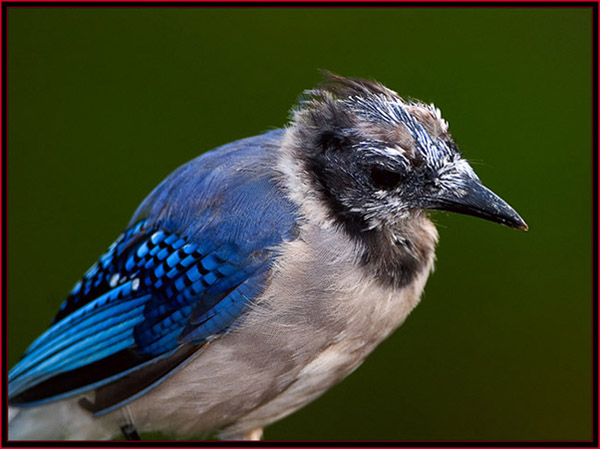
|


|
Saturday Afternoon - SNWR
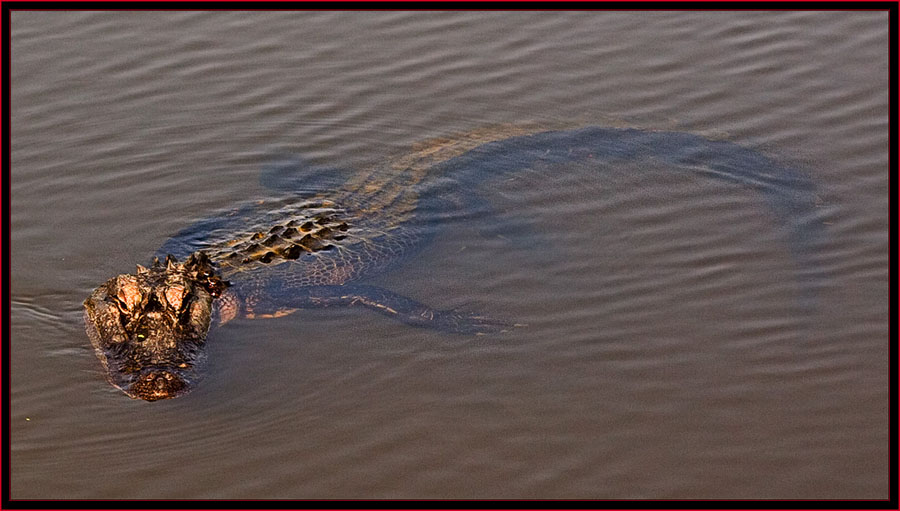
|
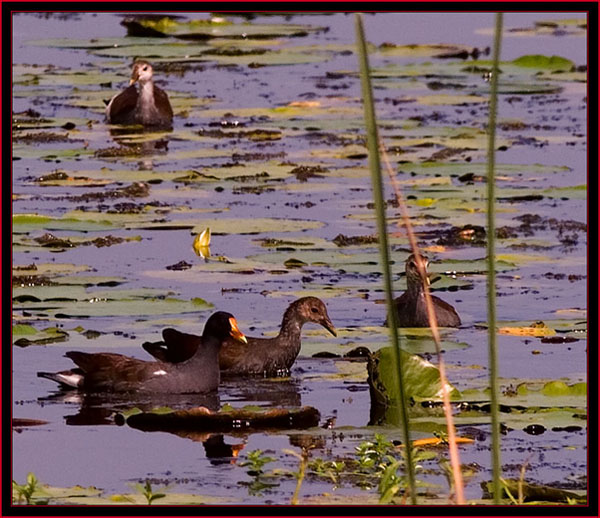
|
I drove around the refuge grounds looking for whatever may be around the water and environs for wildlife and soon came to the entrance of the wildlife drive. This was all pretty familiar and I again commenced the circuit to learn what May be found. In one area a group of Common Moorhens were out and about, more than Iíd generally viewed at once. They were far off in the lily pads but within range of my lens at 700mm. I took a series of shots of these birds and noticed some other activity not far away. I noticed a Pied - billed Grebe fishing, the first Iíd seen of this bird in the refuge. The grebe would dive for long periods of time Ė at least it appeared a long time when youíre waiting for one to surface for a photograph Ė and eventually was able to get some exposures as the grebe frolicked and fished. |
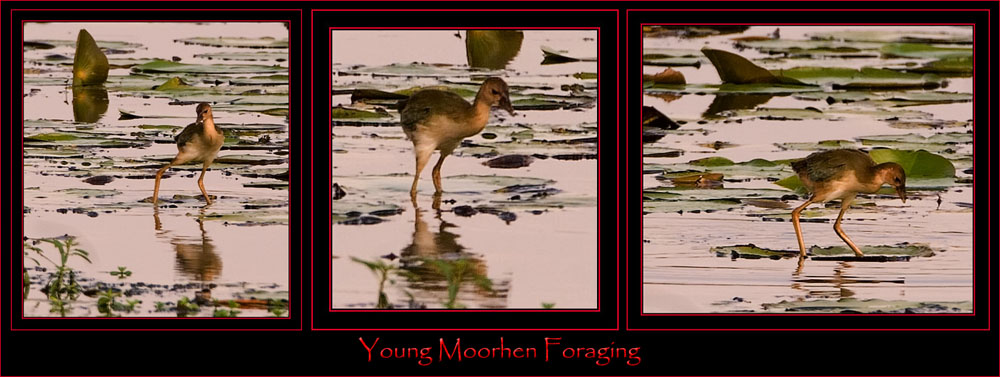
|
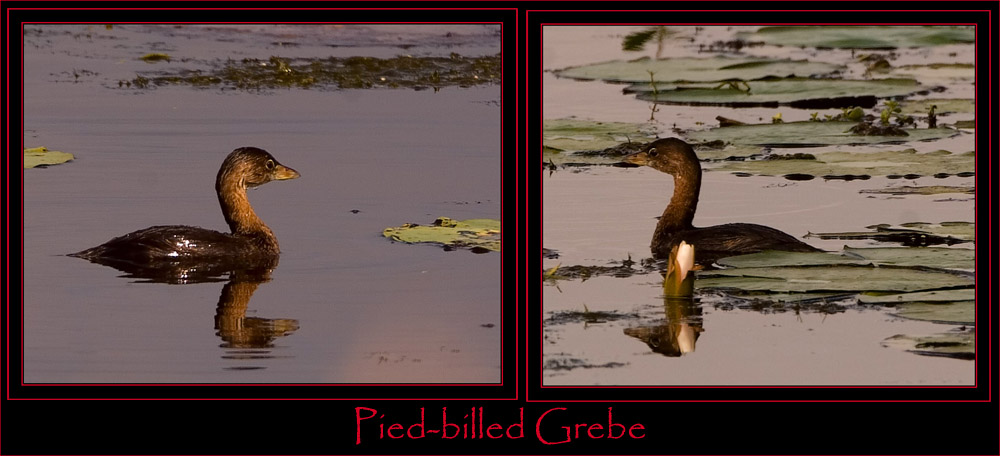
|
| Further down the road I viewed some Great Egrets, perhaps younger versions as they werenít as large as many in the area. I didnít really need more egret images, but stalked them for a bit and took some photographs as they foraged around the banks passing the time. |
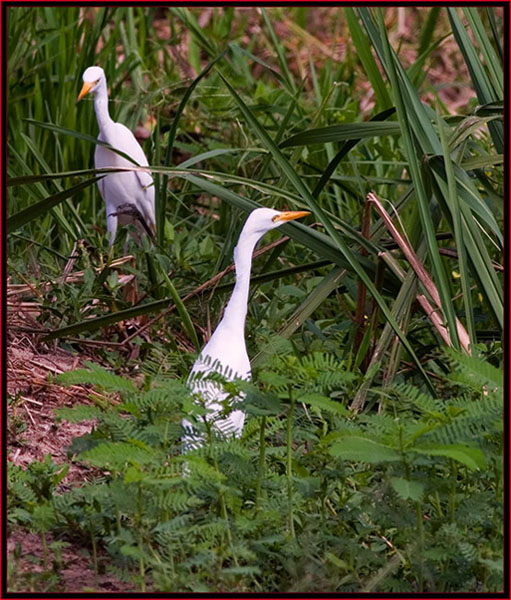
|
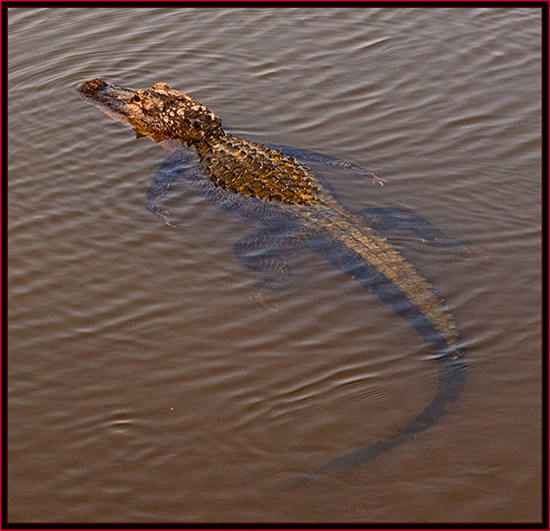
|
I came to one of the bridges that span the water and found some people there looking at a gator. Nothing was particularly unusual about this, but one gator perhaps seven or eight feet long, was swimming about and we could see the length of the reptile. I took a few head shots with the longer lenses and decided to change to a shorter focal length to capture the entire animal. As I was doing so a fiddler crab swam by under water and I took a fuzzy image of him as well. After taking a few more exposures including a dragonfly or two, I loaded the tripod and moved on. |
| I didnít enhance many images from this group but what you see here is a representation of the afternoonís photographic effort. Actually this is true of all the images in this article. I enhanced perhaps four hundred images out of the sessions in Georgia from this trip of all subjects. I didnít count the total exposures, but I would surmise that I exposed around three thousand images during the twelve days this photojournal describes. Of course many of these are deleted upon review... |
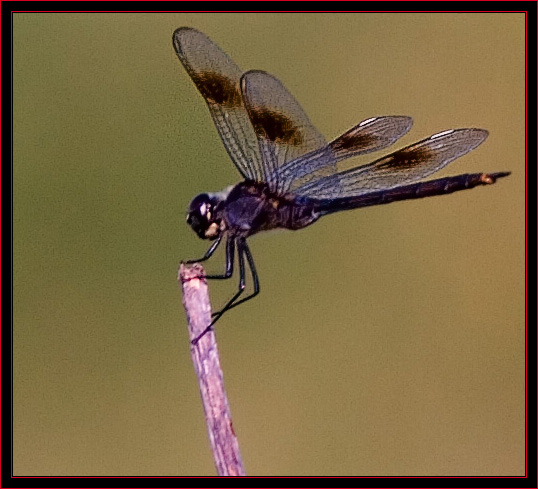
|
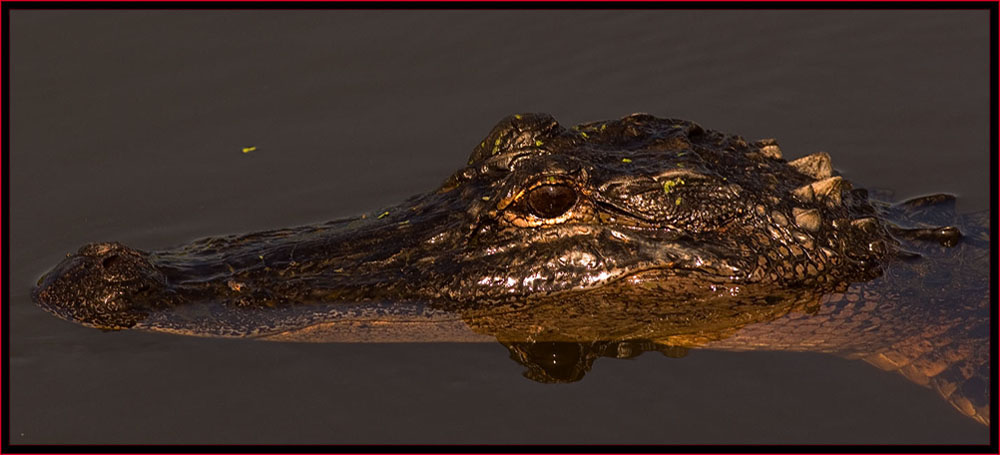
|
Sunday, September 16th - Georgia Into Florida
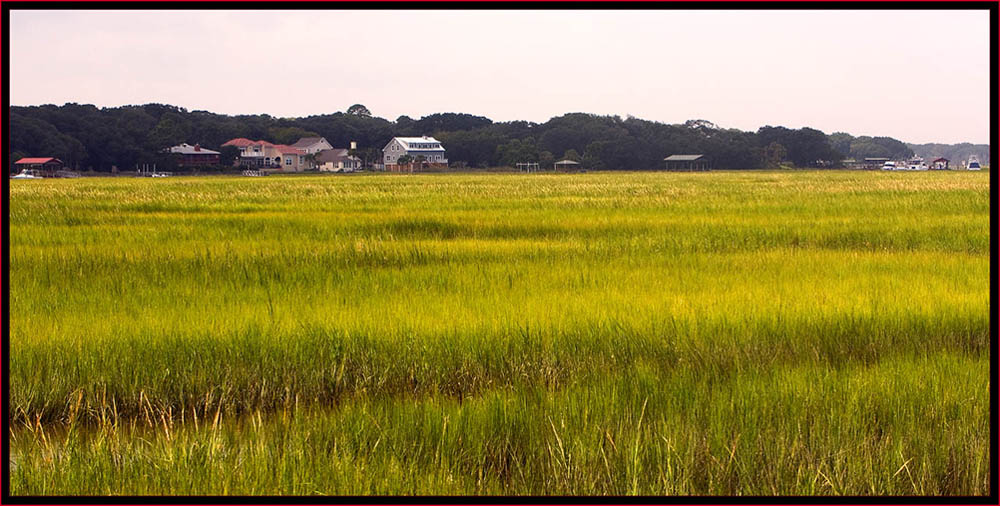
|

|
I learned through my office that several associates were flying to Jacksonville, Florida the following Monday to investigate a potential acquisition. They asked me to join them to evaluate the property before an offer was placed. They were flying in Monday evening and had made hotel arrangements where I was to join them. Once I received their itineraries my schedule was adjusted accordingly. What this meant was I had to be in Jacksonville no later than Monday evening when they arrived. I formulated a plan to visit several state parks on the ĎGreat Florida Birding Trailí as I drove south. After going on-line and selecting several possible sites, I decided to head to Jacksonville, about two and a half hours drive time from Savannah, on Sunday around noon. |
| After reading about what was in the area I decided to start at Fort Clinch State Park near Fernandina Beach. I traveled the park roads and stopped from time to time to look around. One of these stops featured a newly constructed deck that overlooked the marshy environment and the Amelia Island Lighthouse could be viewed across the way. This drew my attention so I pulled the tripod and handheld camera out and went to look around for imaging opportunities. Afterwards I traveled to where the fort was located but didnít tarry long as it was getting on in the afternoon. Once Iíd driven around the interior roads a bit more, I headed to the exit and left the park. |
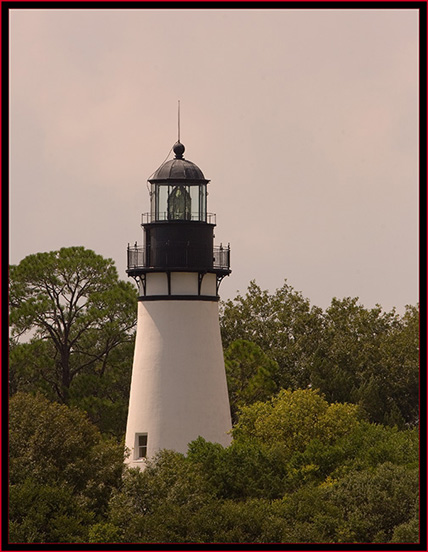
|

|
Next I drove the coastal route to visit Amelia Island, where Iíd journey to some other sites in the area and stay for the evening. Overall I visited seven parks that were ocean sites or inland marshes with varying environments. I remember which ones I stopped at but didnít attempt to take notes or anything so some of this kind of runs together as to what was what as I write this account. On Sunday besides Fort Clinch, I visited Amelia Island State Park, Big Talbot and Little Talbot State Parks, plus made various stops along the coast as I drove south. This wasnít as ambitious as it may first appear; some of the stops didnít even include leaving the vehicle, just a brief and cursory inspection of what the areas offered. I had the next morning, the premier time to seek birds, available and I was inspecting, hoping to find the right spot to dedicate my efforts the next day. Iíll take you through a visual tour of my Sunday afternoon... |

|

|

|
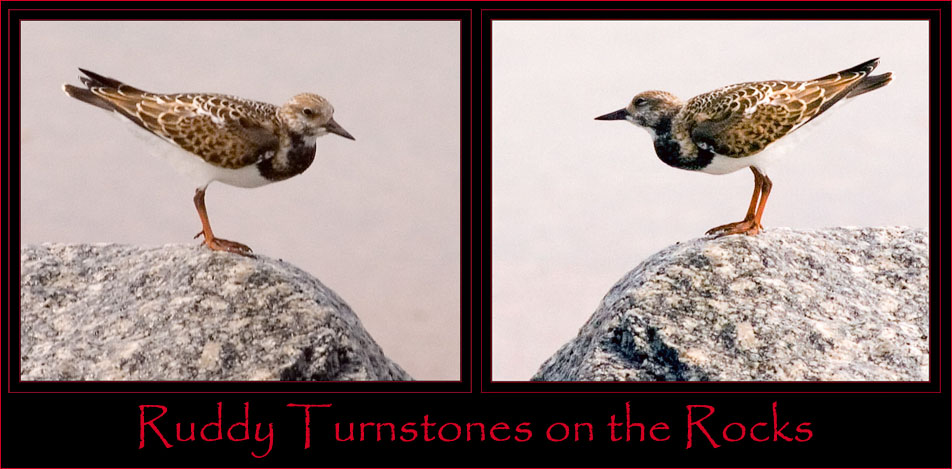
|
| An American Oystercatcher fly-by at Amelia Island State Park. This was a species I was hoping to find, but this was the only bird I viewed and I was fortunate to obtain several photographs... |
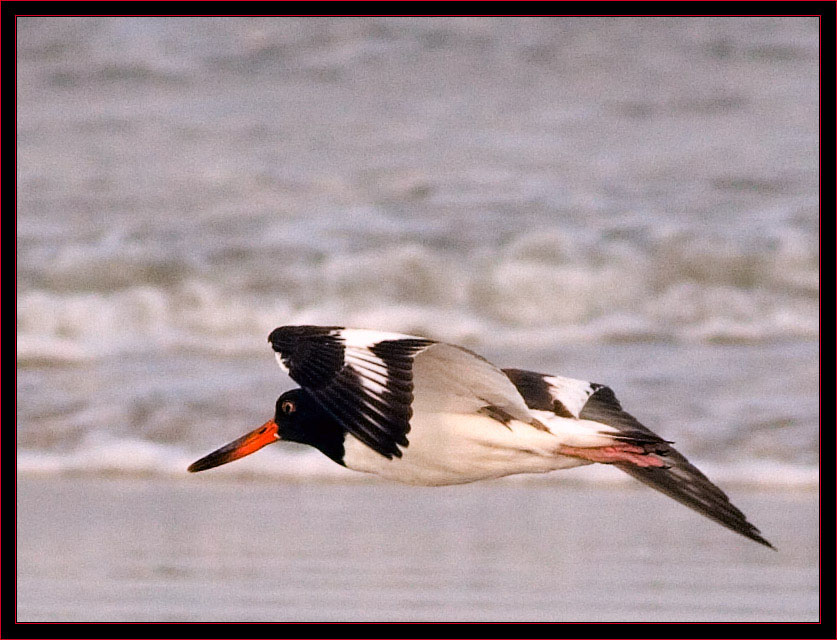
|
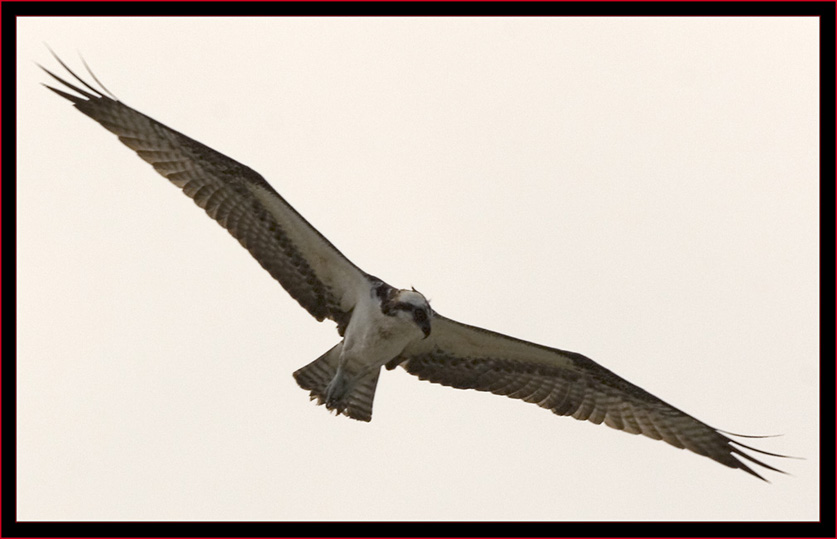
|
This lone Osprey was foraging as I walked near the pier at one of the parks. No other birds of prey were viewed in this area. |
| A group of mixed terns were spotted on the beach. I didn't attempt to get close to these birds but imaged this one flying out to sea. |
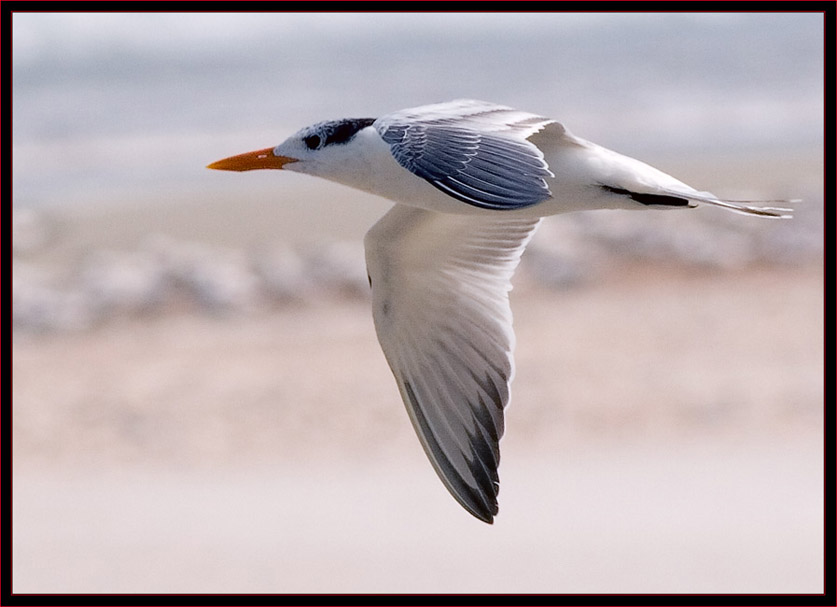
|
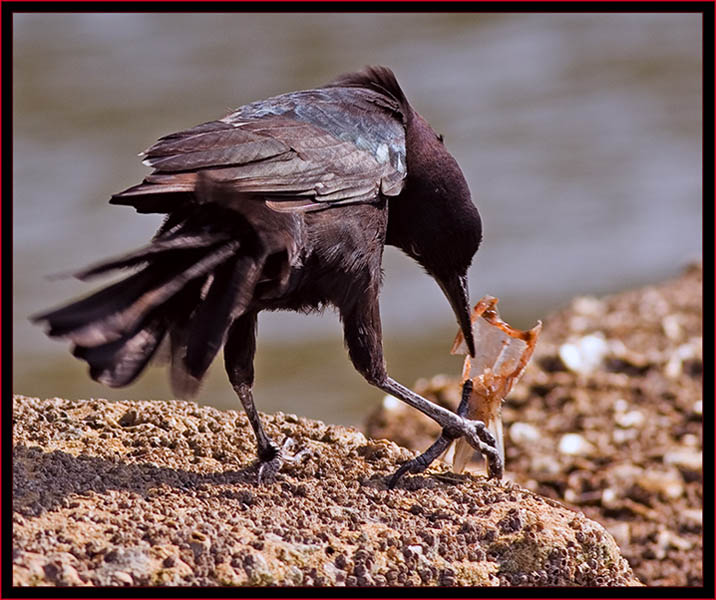
|
I came across this American Crow picking out a shrimp along some rocks. This bird didn't mind my approach but didn't appear to appreciate the interruption. |
Monday, September 17th - Amelia Island to Jacksonville

|
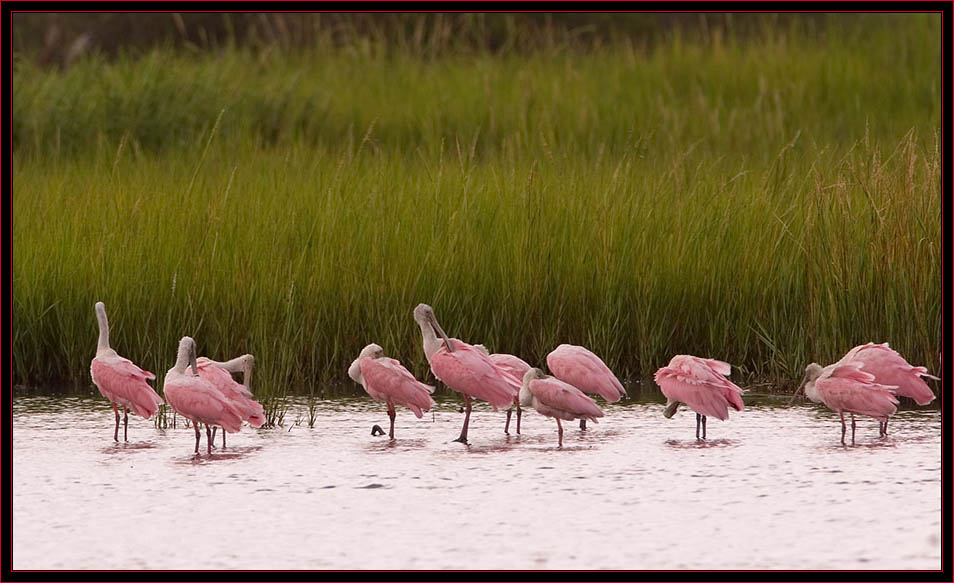
|
| Mixed in with the spoonbills were some Greater Yellowlegs, herons and egrets. I spotted a Reddish Egret as this bird was going through his Ďdanceí routine while fishing. I tried to photograph this birdís motions but the lack of light kept the shutter speed too slow to make this effective. I did get a few nice shots of this egret as can be seen here... |
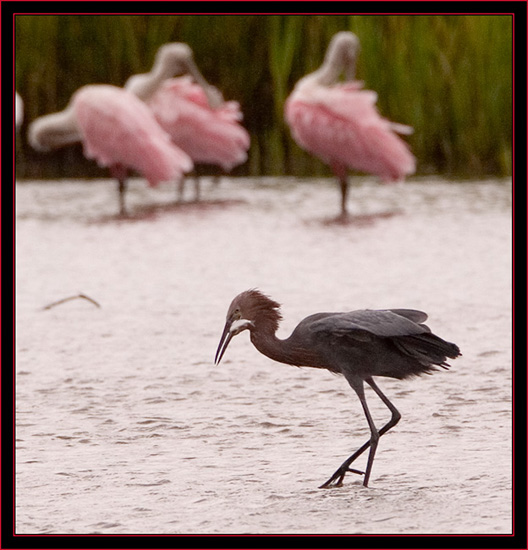
|
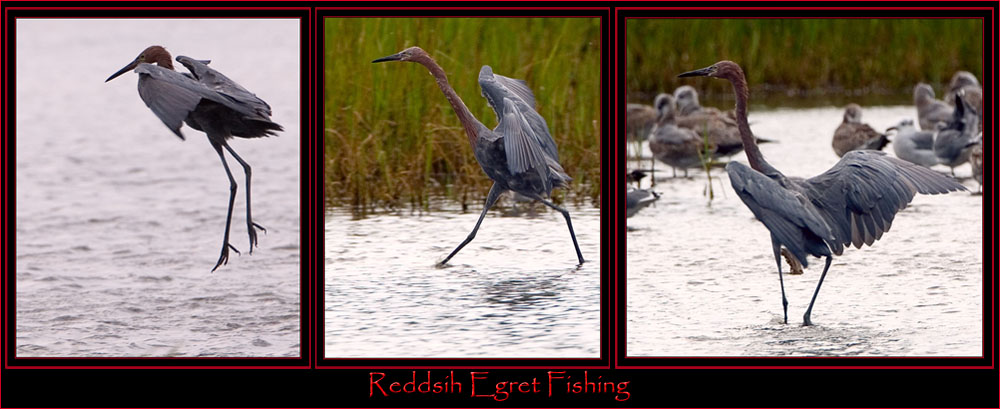
|
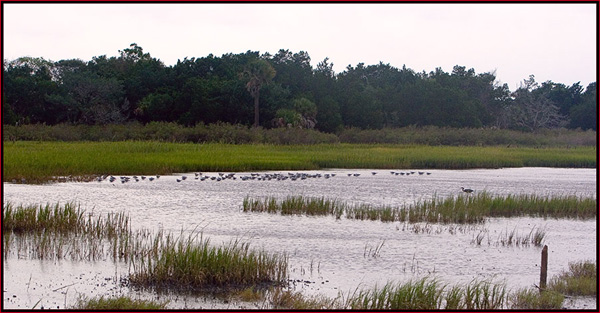
|
Traveling south on A1A I turned into Huguenot Memorial Park located on Heckscher Drive, actually part of Jacksonville. I found this park quite unique. You can camp, fish, whatever as is generally the case, but the big draw appears to be that the have miles of beach you can access with your vehicle and four-wheel drive trucks were going all over the place. The entrance fee was fifty cents... Fifty cents I thought Ė yikes... Actually, when I got to the booth the lady indicated the water was so high from the phenomenal rain and high winds, that there was no beach access and they werenít collecting the fee. I told her I simply wanted to drive in and look around for a time and she let me pass. |
| This park was pretty neat and I drove around checking out the various areas. I could see what she meant though; it wasnít what could be considered a nice day by any stretch of the imagination. As I drove by campsites with tents set up I wondered how the campers faired throughout the heavy rains... One thing did make me get my camera out though. There was an Osprey perched on a tower intently watching the water below. This bird looked so majestic on his perch that I wanted to get a few photographs, which I did. |
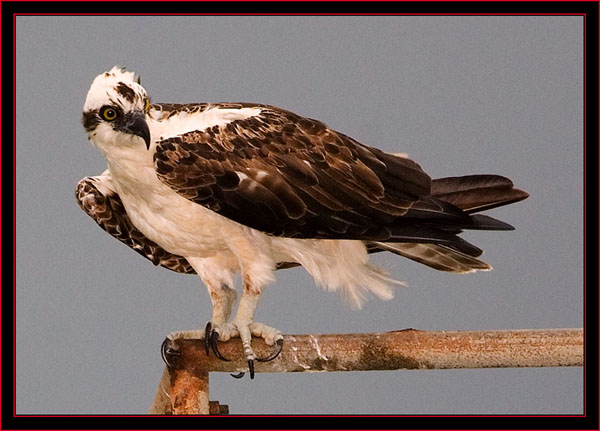
|
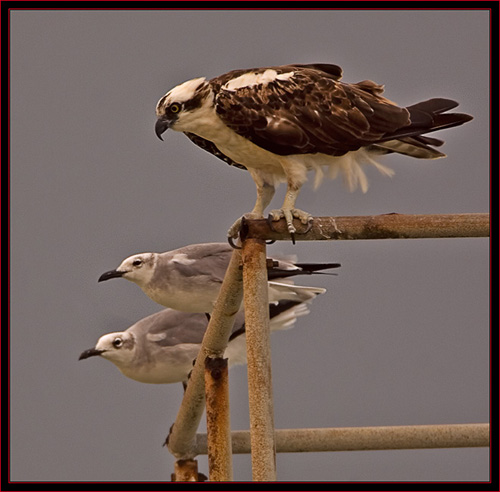
|
The Osprey was joined by some Laughing Gulls and the group stared intently at the water, waiting patiently for some fish to appear within their grasp. I noticed a group of dolphins frolicking close to shore as I was driving out... |
| Iíd read about another site, Kingsley Plantation, located on Fort George Island and figured Iíd stop there if I had time. The gravel road to get to this is a longer drive than I realized but it was quite a nice area through moss draped trees that looked like ideal birding territory. I took my time and meandered towards the plantation. This site is administrated by the National Park Service and includes the plantation house, kitchen house, a barn, and the ruins of twenty-five of the original slave cabins. If there were anyone around I didnít see them. I was completely alone as I walked the grounds and checked out the surrounding area. I really didnít stay long; I didnít see many birds and none that captured my interest. Although I love history in the many facets it offers, I didnít wish to take the time to investigate the various buildings thoroughly as I walked about. I took a few photographs of the beautiful area and got back on the road. |
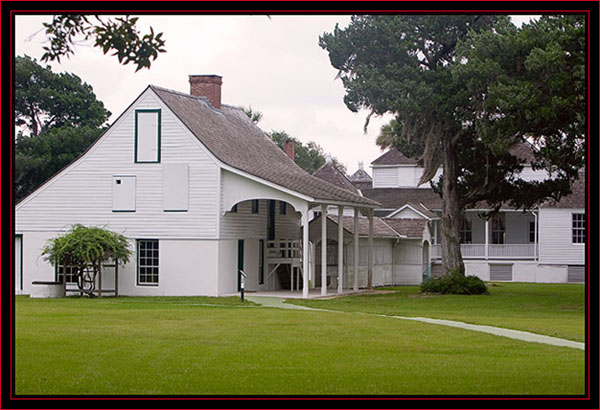
|
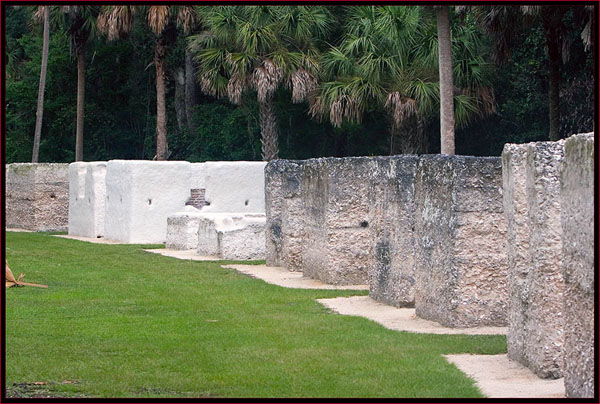
|
As I was fairly close to the hotel in downtown Jacksonville I estimated I had several hours left before I needed to head into town. Checking the information I had, I elected to visit Cedar Point, another park noted on the Great Florida Birding Trail. This is located on the opposite side of the ocean from Fort George and was perhaps a forty-five minute drive or so from the plantation. Once I got to the site I was surprised to see that the park didnít consist of much of anything. The road ends abruptly at a point where on can investigate a maritime hammock, salt marsh, scrub woods & freshwater wetlands. I believe this site had potential but with the recent rains there wasnít much beach here either. Some folks were fishing and rather than disturb anyone, I walked around a bit and soon got back in the truck to head towards downtown. Driving the roads around Cedar Point was interesting but I didnít see anything that attracted my attention enough to stop and investigate. In the end, I didnít take any photographs from this stop. |
| I drove into Jacksonville on Route 95 and it wasnít long before I hit a major traffic jam. I only had a few exits to go before I turned off to find the hotel, but lost nearly two hours. I didnít know what was causing the delay or if this was typical on a Monday afternoon, but soon enough I learned that the police were diverting all traffic off 95 near the intersection of Route 10. I later learned this was due to severe flooding and the considered the road impassable. |
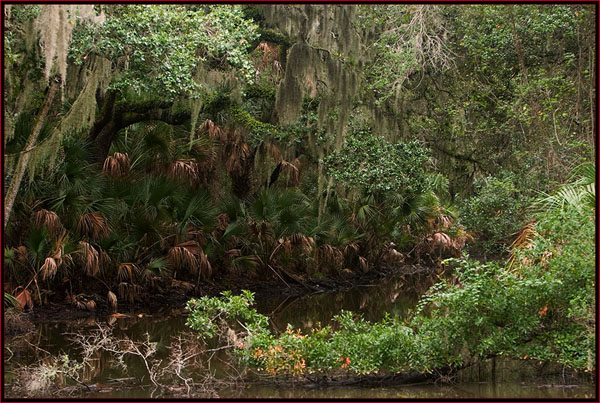
|

|
Tuesday, September 18th - Savannah Return
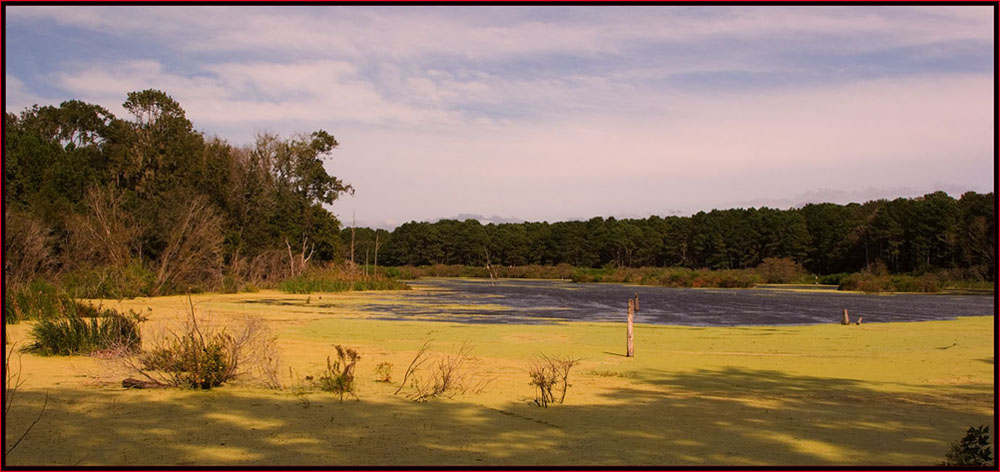
|
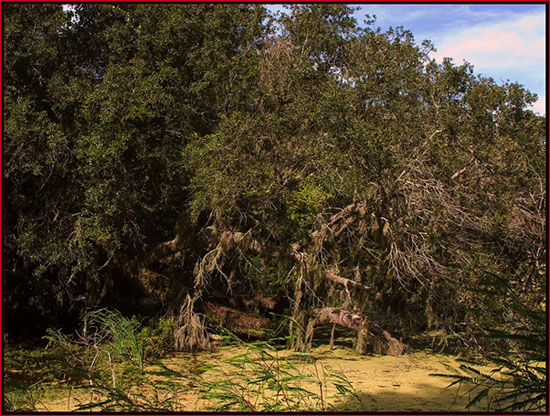
|
I hooked up with my associates and we had dinner and made plans to meet the next morning to discuss the properties before attending the meeting. We met our contact and went over to conduct the inspection for the business portion of the day. We walked the properties and I took a group of images to get a general impression of the units and area. I dropped off my co-workers at the airport around 1400 hours and was soon heading north to Savannah. |
| On the way down Iíd noticed the signs for Harris Neck National Wildlife Refuge in Georgia and thought Iíd take some time to have a look around. Harris Neck NWR is one of seven administrated by the Savannah Coastal Refuges Complex, including the Savannah NWR which Iíd been visiting frequently. This refuge was at one time a WWII Army airfield and remains of the runway and supporting paved areas can be viewed as you drive around. According to the information I had on hand, the refugeĎs Ď2,824 acres consist of saltwater marsh, grassland, mixed deciduous woods and cropland. Because of this great variety in habitat, many different species of birds are attracted to the refuge throughout the year.í |

|
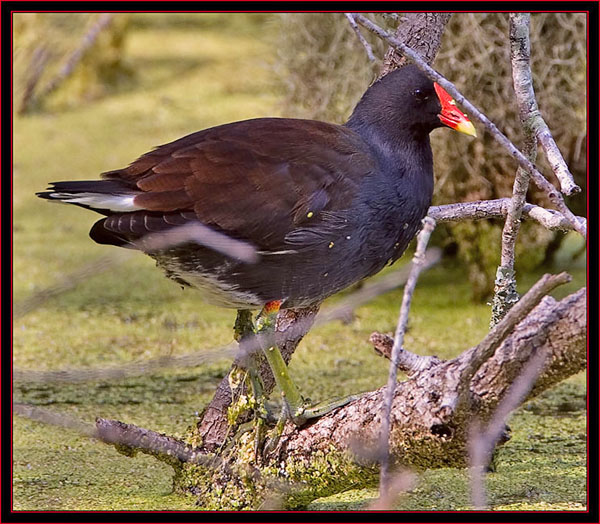
|
I located the wildlife drive, a four-mile stretch (similar to the Savannah NWR) and started off. The first pond I came across was up a small rise by the road. Parked and walked up to have a look. ĎOh yesí I thought to myself, Ďthis looks like it could have potentialí. It was around 1600 hours and probably not an auspicious time to be looking for animals. As I looked out into the pond, much of it covered with green algae, I didnít see a lot of movement. In the distance were some herons moving and flying but this was a long distance from where I stood. As I investigated closer to the road I spotted several Common Moorhens around the edge and in the water. I walked down, pulled out my tripod and got ready to photograph them. I was pleased; this was the closest to these birds Iíd been in Georgia and I thought finally Iíd get Ďthe shotí for this species. Overall, I was pleased with the outcome. |
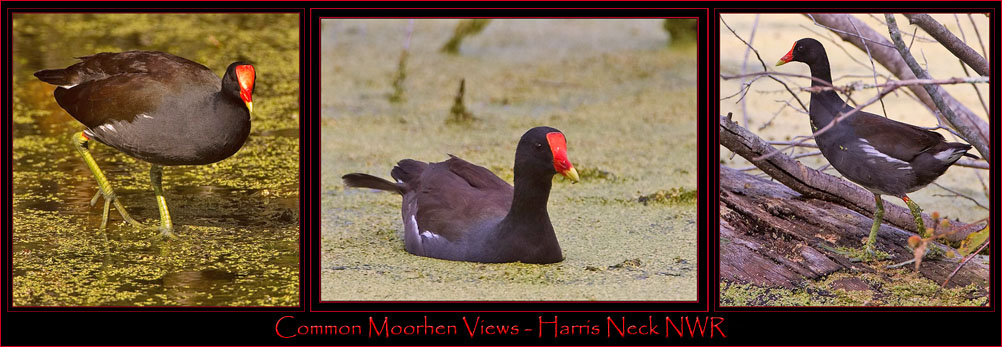
|
| Moving on I viewed several other areas from the road that appeared to be outstanding places to investigate in a morning setting. It would have been no issue to drive closer to check things out, but the areas were marked with no vehicles signs. I saw what I believe to be some hawk activity near some water in the distance. Had I been dressed differently I may have considered hiking back to get a closer look. I definitely planned to get back here sometime when I return to the area. |
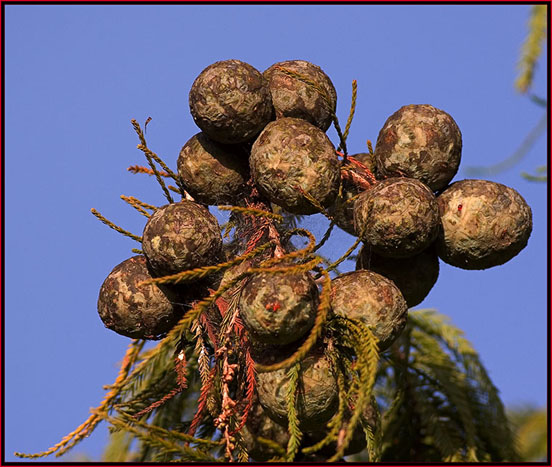
|
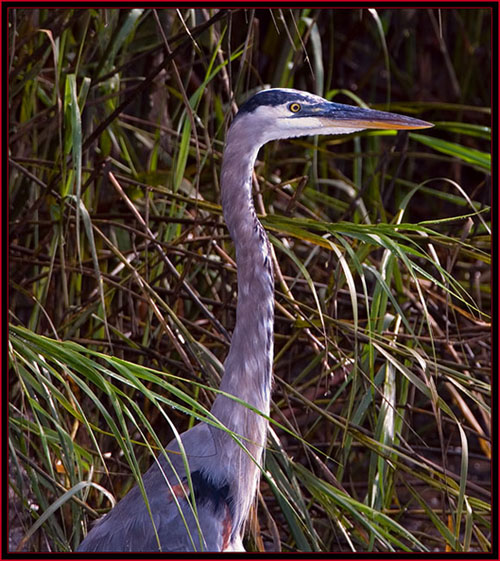
|
I drove around the road and eventually viewed some hunters near the roads with trucks. I learned the limited bow hunting season for deer had just commenced and these guys had been out for most of the day. I suspected this was another good reason to stay out of the woods even if I had the time and inclination to get off the road, which I did not... After leaving the refuge I followed some signs to a public boat launch and stopped for a time to look around this area. I viewed the usual sparrows and crows, a Great Blue Heron or two and shortly afterwards got back on the road for Savannah. |
Tuesday Early Evening - In Savannah
|
Iíd planned to hook up with Billy-bob when I got back in Savannah so drove to Skidaway Island and entered The Landings. Heíd gotten me a pass good for the entire time Iíd be in the area so I
could come and go as I pleased. He wasnít expected home for another hour or so, so I visited the pond where the wading birds hang out. As I checked this out I viewed the usual contingent.
Many of these birds were on the shore near where I parked and I knew I couldnít approach without flushing the group. I tried to be as stealthy as possible, but once one flew, they all
took off across the pond and into the trees. The setting sun was illuminating the trees across the pond on the eastern side and I set up to take advantage of the available light.
After practicing some shots of birds on the wing I packed it in for the day and left.
A Skidaway Island gator swims near the reflection of a Great Egret.
|
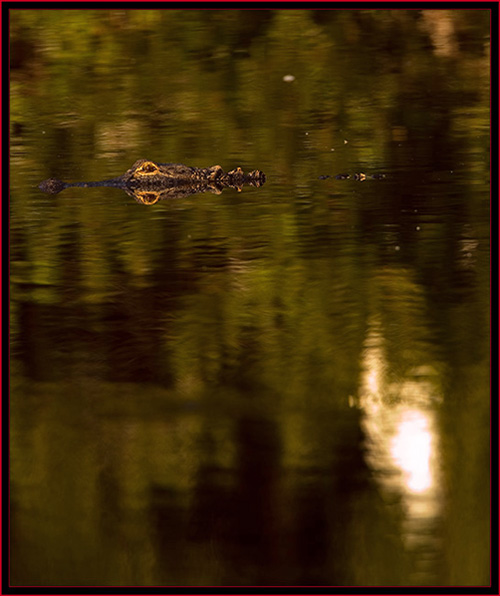
|

|
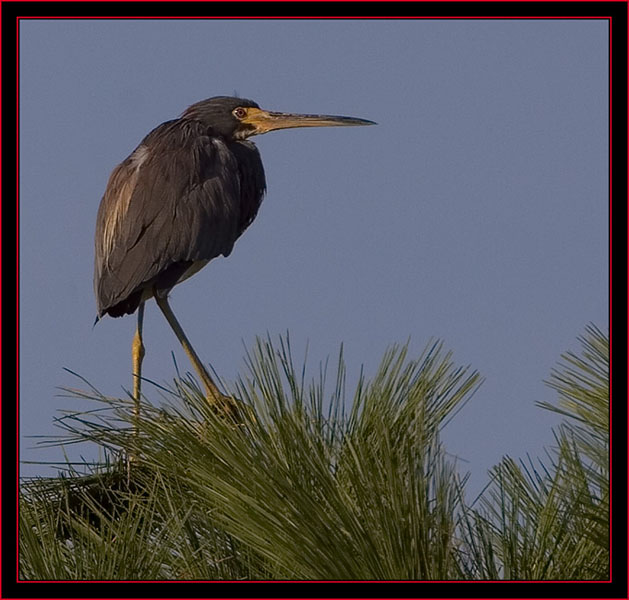
|
A Little Blue Heron enjoying the late afternoon. |
| There were quite a few White Ibis around; more than usual from what I'd viewed. |
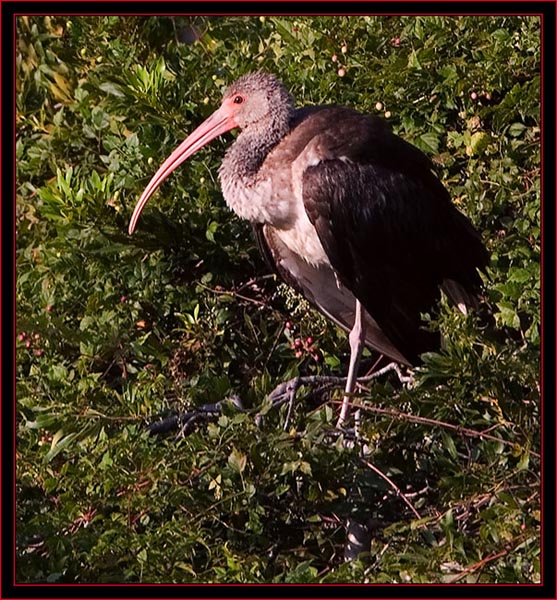
|
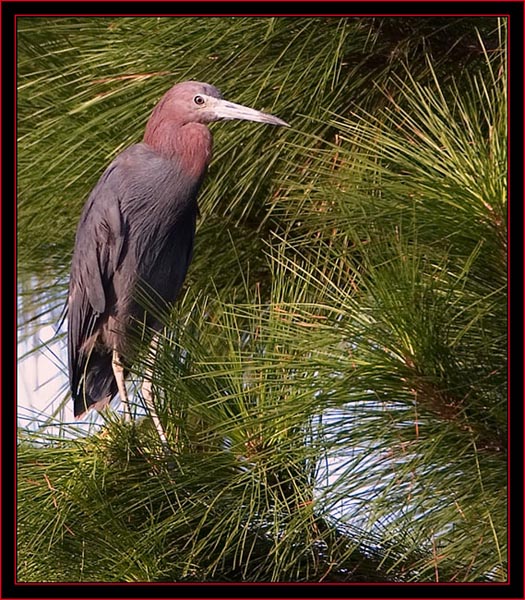
|
A perched Reddish Egret; these birds aren't nearly as common as others on Skidaway but are far from rare. |
| A few more of the White Ibis to be seen. They have no problem mixing with the other wading birds. |
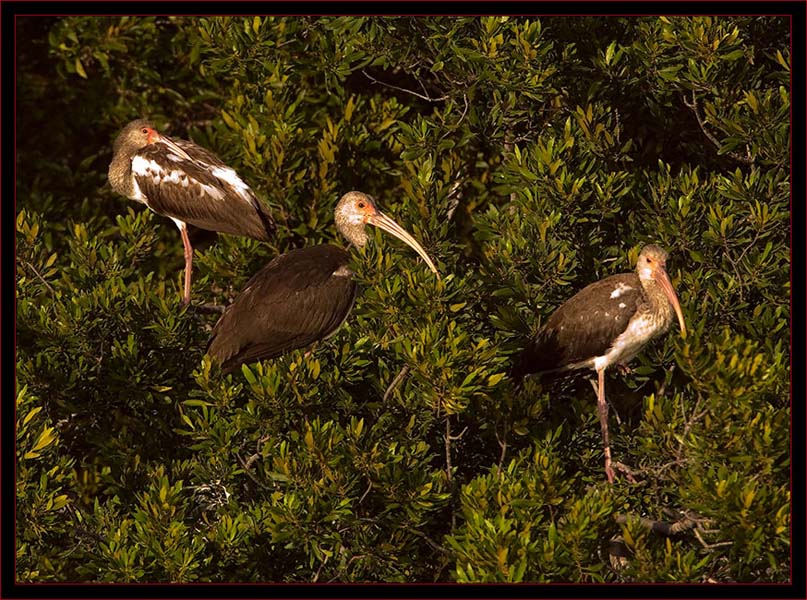
|
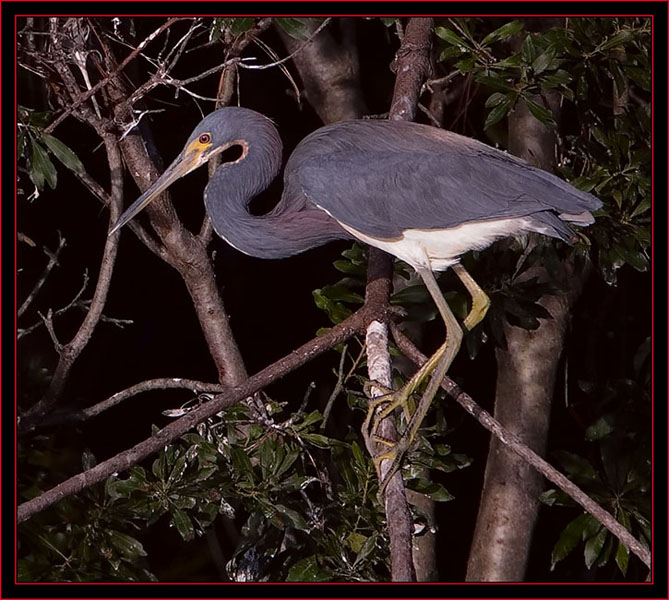
|
A perched Tricolored Heron; these are fairly magnificant birds in my view. |
| A Great Egret landing. I believe these birds are by far the mosy common waders in the area. |
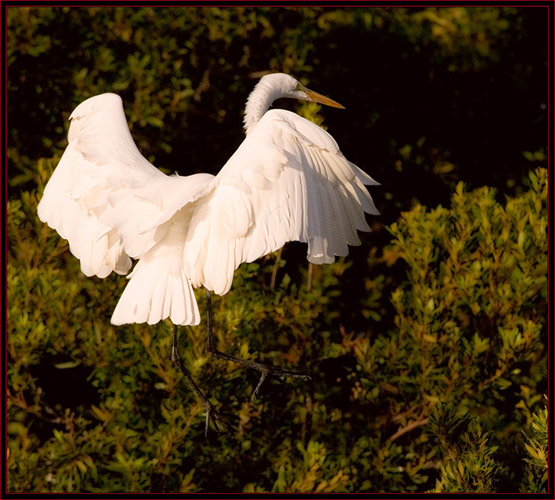
|
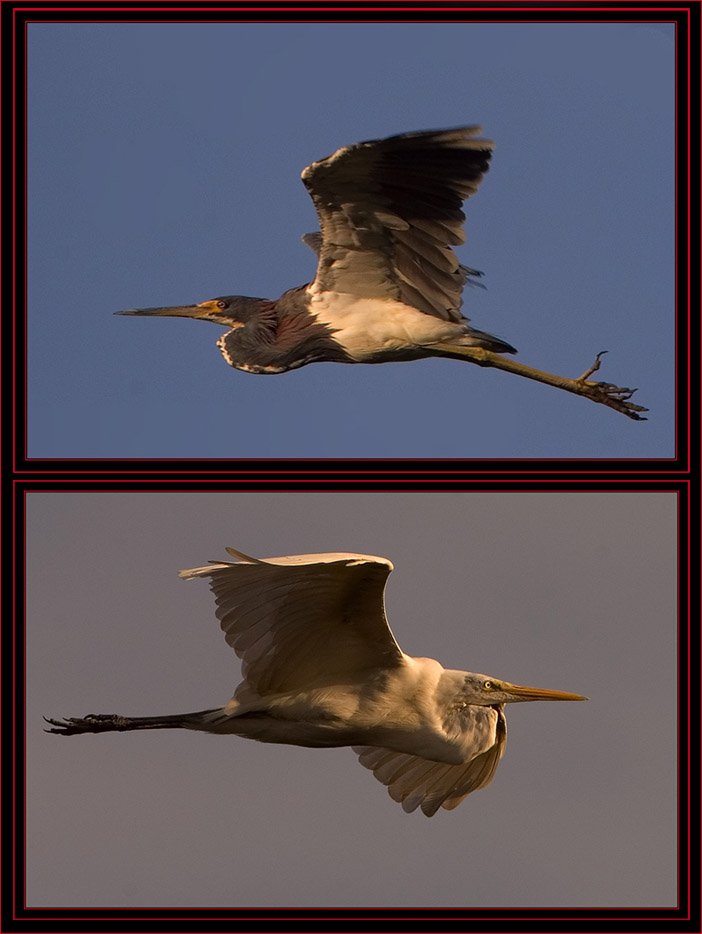
|
Wednesday September 19th - Homeward Bound
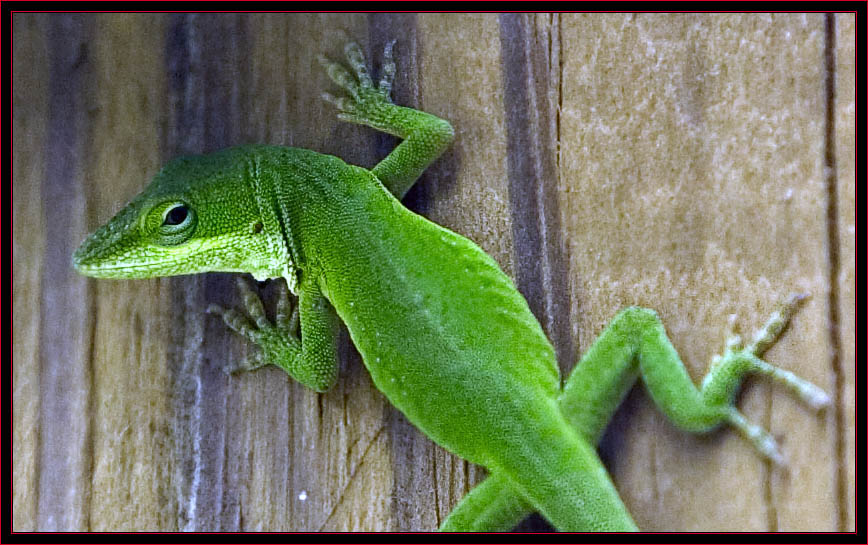
|
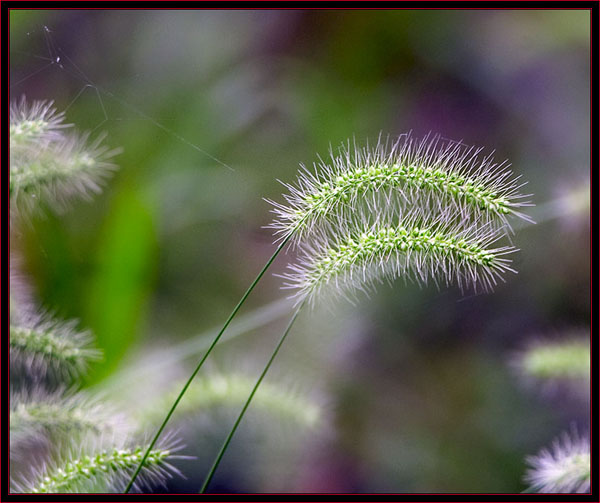
|
The next morning I planned to inspect the work on the project before commencing the long journey north. After Iíd looked things over and made certain the building would be secured once the crews were off site, I started towards Route 95. As I drove from Georgia into South Carolina I checked the time to learn if I could make a stop in the Santee National Wildlife Refuge at Lake Marion. Iíd been by this plenty of times but never took time to stop, so I thought Iíd investigate what may be there, fuel up, etc., and then get back on the road. All the image in this final section were taken at the Santee NWR. |
| The Santee National Wildlife Refuge was established in 1941 to alleviate the loss of waterfowl and wildlife habitat due to the construction of hydro-electric projects on the Santee and Cooper Rivers. It stretches eighteen miles along the northern shore of Lake Marion and consists of 15,095 acres within Clarendon County, South Carolina. |
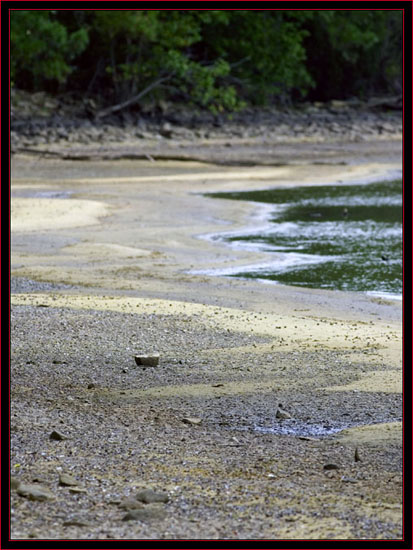
|
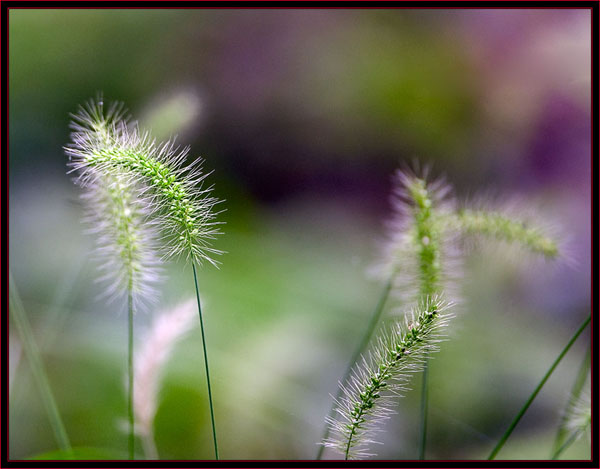
|
As I entered the park it didnít take long to learn that the interior road system wasnít extensive. Once you got around the lake, parking your vehicle and hiking appeared to be the best course of action. I drove as far as I could without going beyond the no vehicle point. I walked about to have a look for a few minutes, not far from the Indian Burial Mound in this area. Reading some of the information I could see there was a great deal of history in this area that I should investigate if I could find time to get back. As I looked into the woods I noticed a beautiful American Redstart followed by some other warbler sized birds. This was enough to make me grab a camera and walk out to investigate. I hiked around for about forty-five minutes but never did come across any of the warblers or anything else close enough to image. I think this place has great birding potential and I would like to return another day. Soon enough I reloaded my equipment, looked at my watch and knew I had to make some time. I had many miles to cover before sleeping for the evening if I were going to make it home the next day... |
|
I photographed this Bald Eagle overhead and tracked the bird for a time hoping to get a closer view.
If anything, the eagle gained altutude and after awhile I gave up on a better shot.
After leaving the refuge I packed my camera for the duration of the trip home. One never knows what can be found while driving along so itís never packed away where it cannot be quickly liberated. In this case it wasnít used again before returning to Maine. I focused on making time to get through Baltimore and DC and looked forward to homecoming tomorrowÖ |
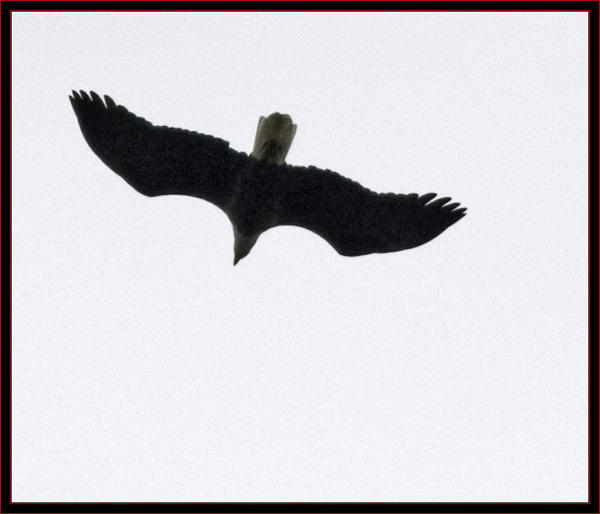
|

|
October 2007